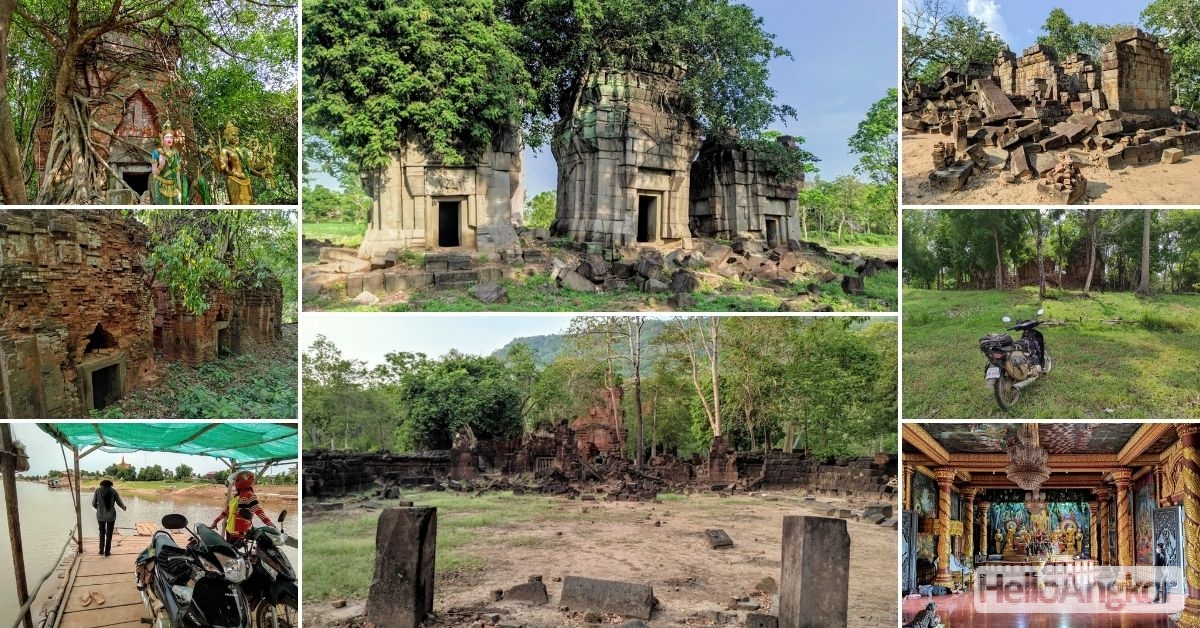As far as ancient sites go, Preah Vihear Province is incredibly fascinating, featuring the great wonder that is Preah Vihear Temple and a collection of remote temples that are true wonders still holding a lot to reveal about the early stages of the Angkorian Empire. I’d covered a lot of that here in North Eastern Tour of Preah Vihear Province visiting some sixteen sites, some quite easily, some are a bit more challenging. This time, it was a loop around from Siem Reap heading north, then east through to Preah Vihear Province again, then south to Kampong Thom, and back to Siem Reap over 5 days/four nights from 26th to 30th April.
Another solo tour, for most of the way, again on the Honda Wave starting by heading north out of Siem Reap along road 67 and road 66 via Preah Dak, Banteay Srei, Srei Noy, stopping quickly at Wat Hem Van for a look and all the way to the Cambodia/Thailand border at Choam Sa Ngam.

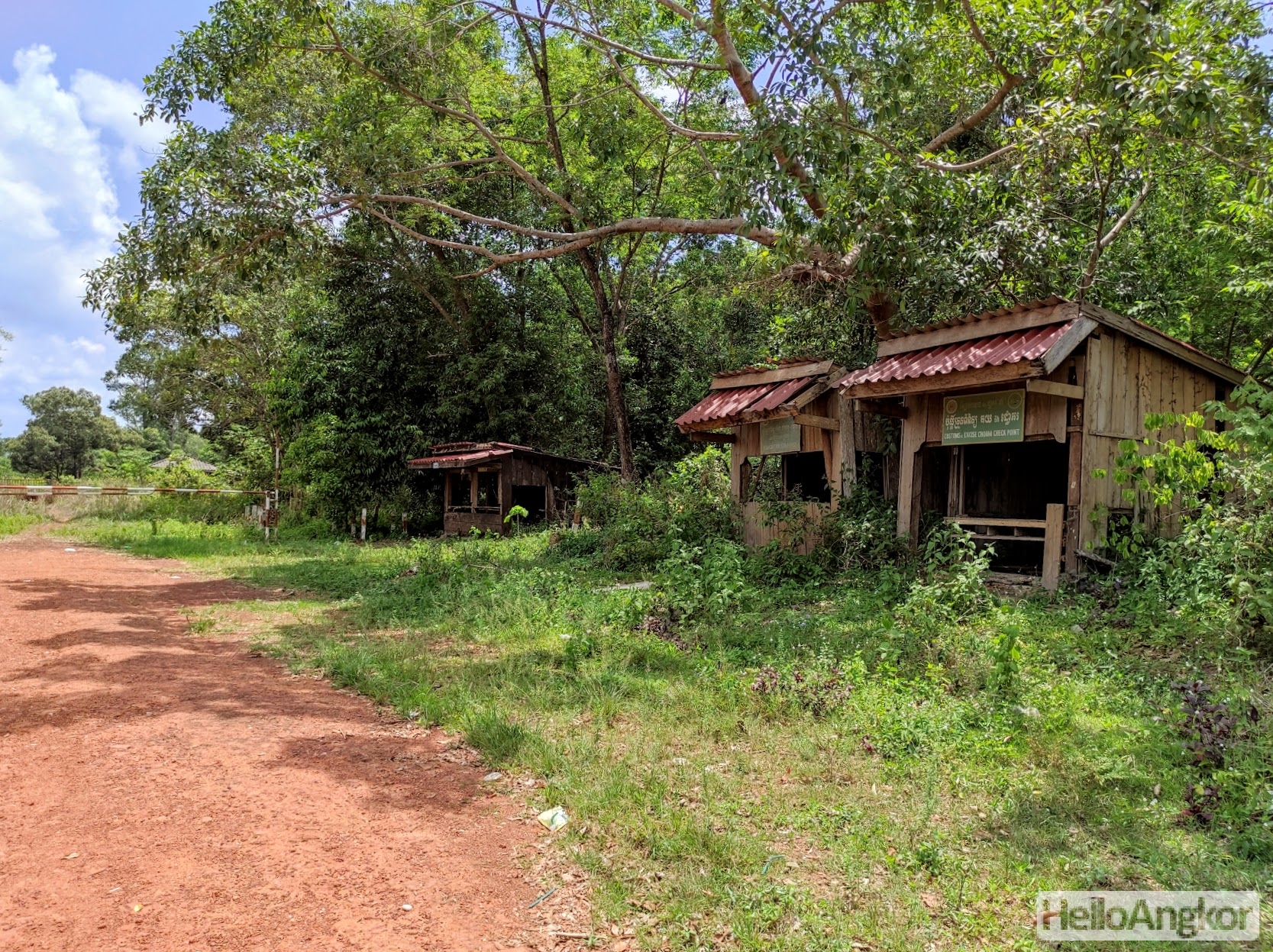
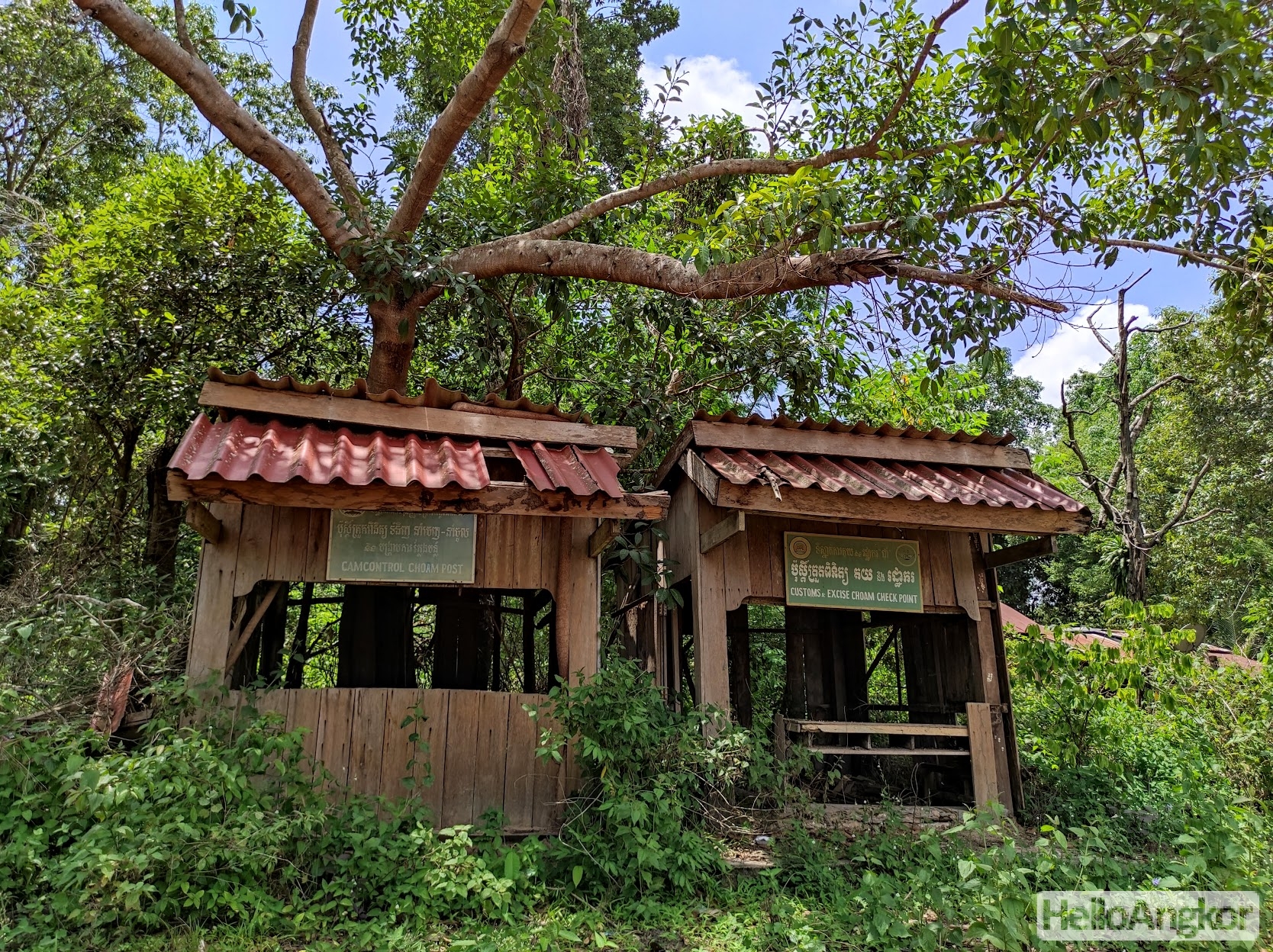
Being at the top of the Dangrek mountain range there are some nice views, and lots of development going on too.
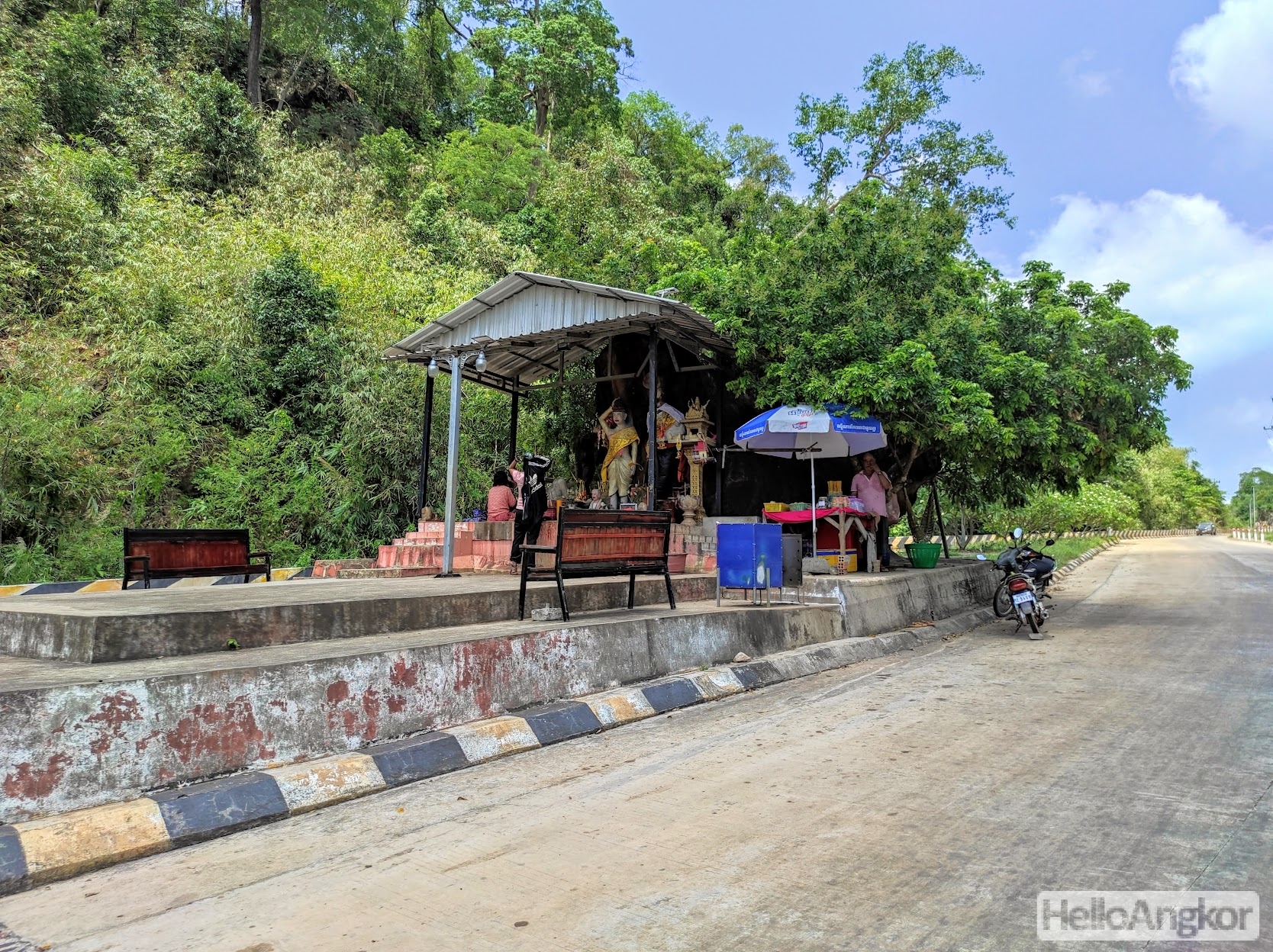

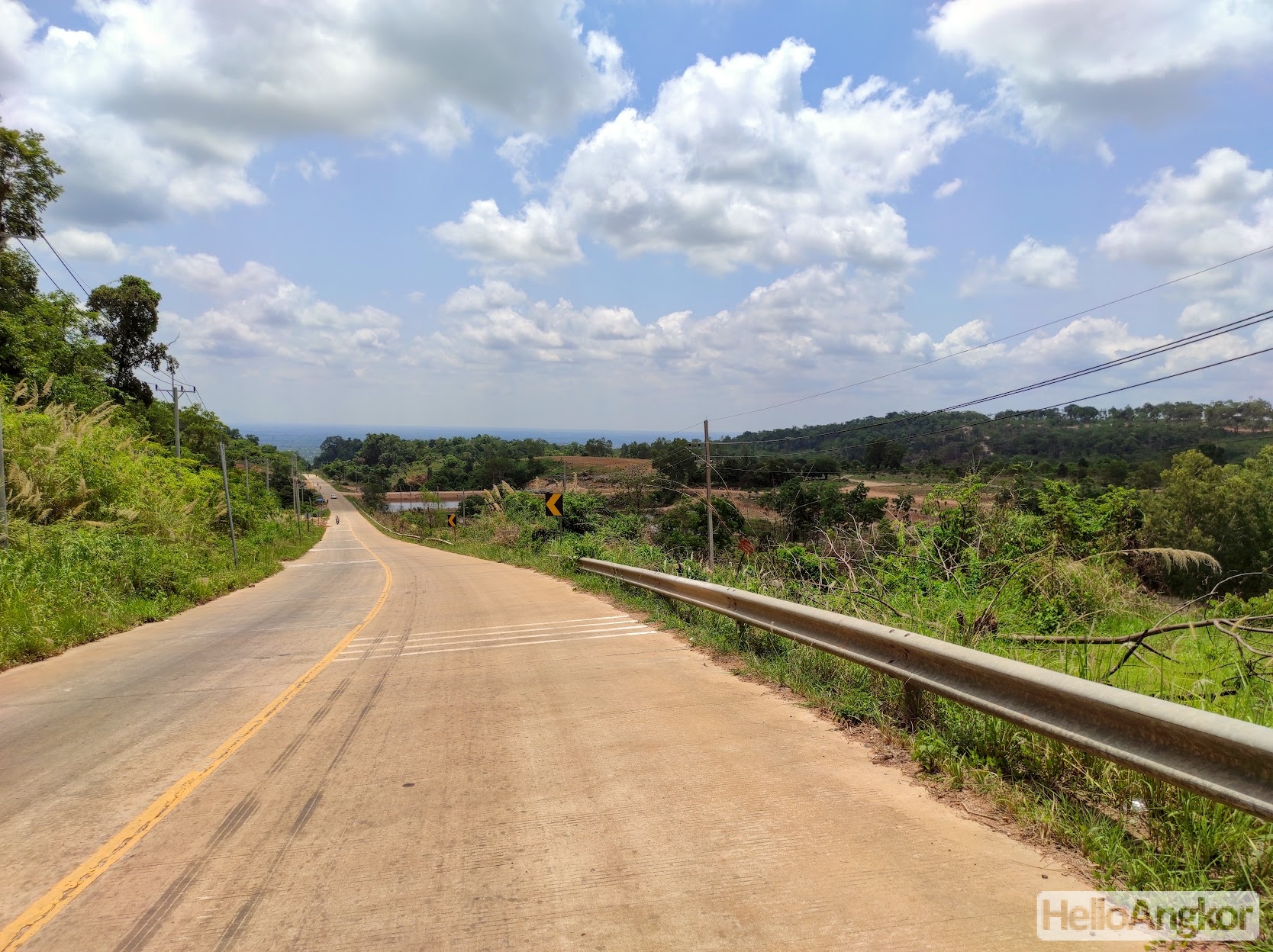
I had the intention of going to Pol Pots House, Tamok House, etc but, I bailed. I started heading that way and suddenly had no energy and no will to go on. So instead, I headed back to Anlong Veng and then east towards an ancient temple site and suddenly my energy returned. It didn’t take long to reach Trapeang Prasat, a small town carrying the name of the nearby ancient temple.
There are two temples and a pagoda here, Trapeang Prasat featuring the remains of three brick temples and a little to the north, Trapeang Prasat Toch which is a laterite temple reminiscent of a firehouse or hospital chapel although not enough remains standing and no stele to indicate such has been found to date. There are also some very large basins, some perhaps contemporary and undergoing works.
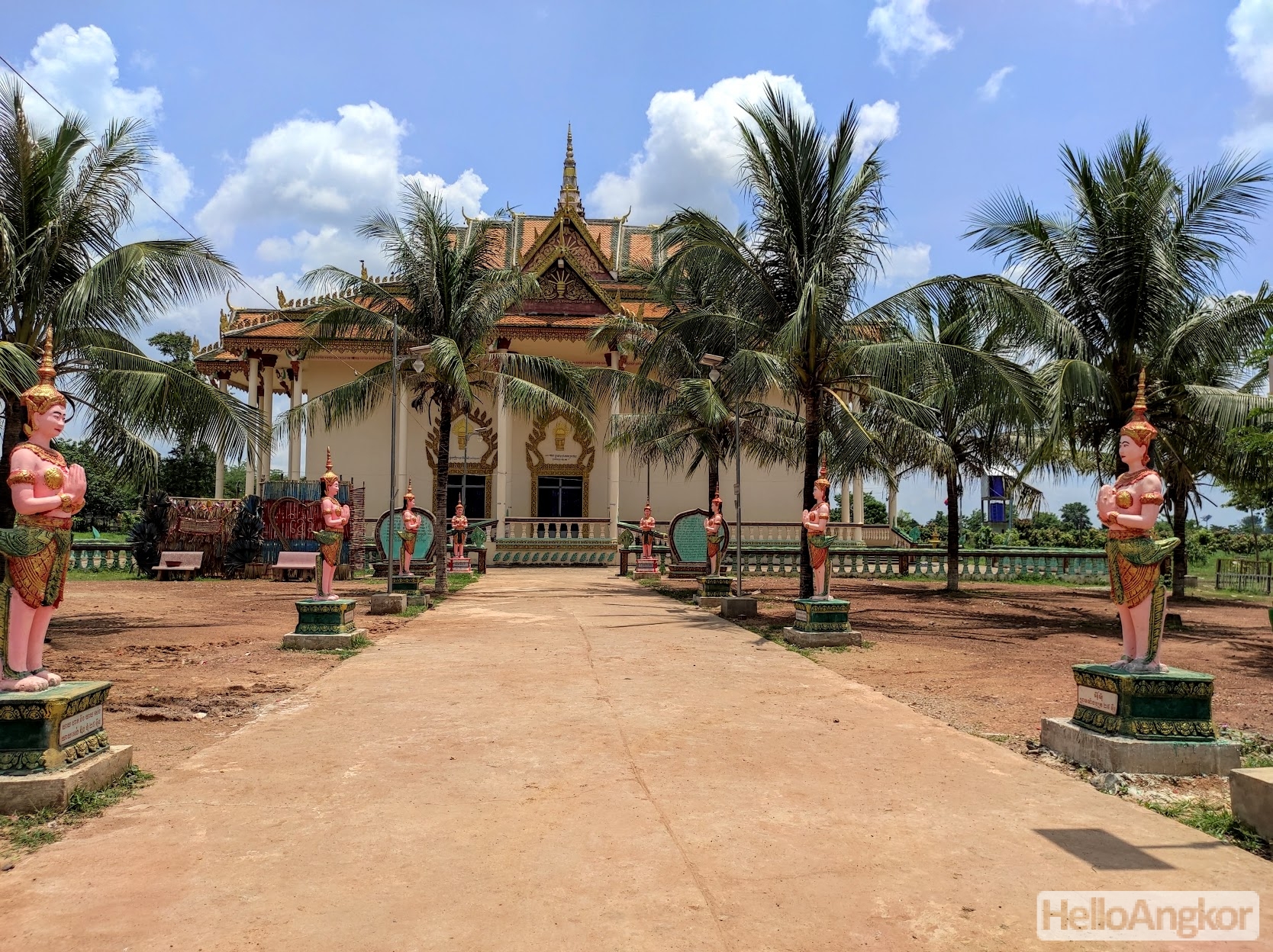

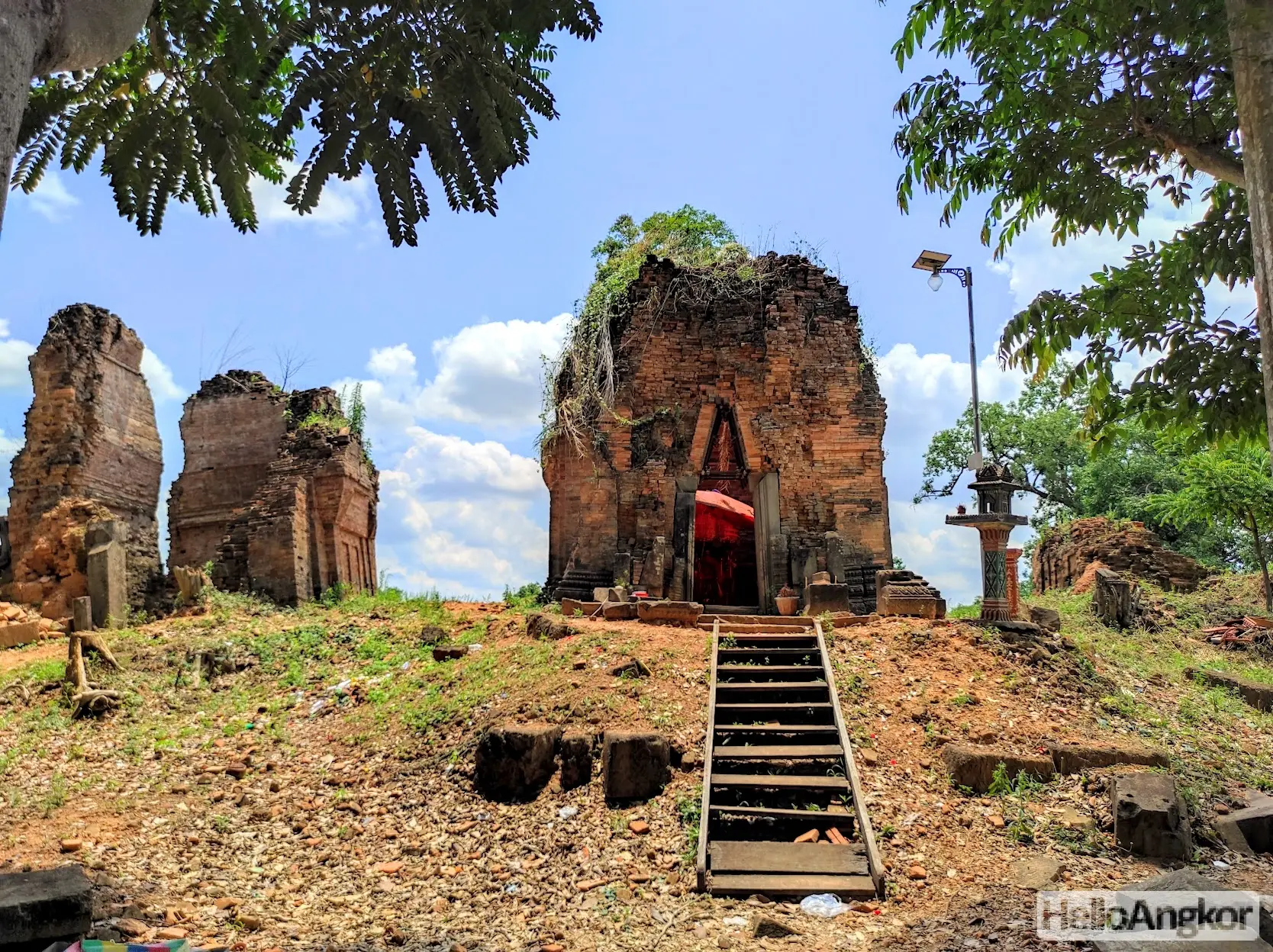
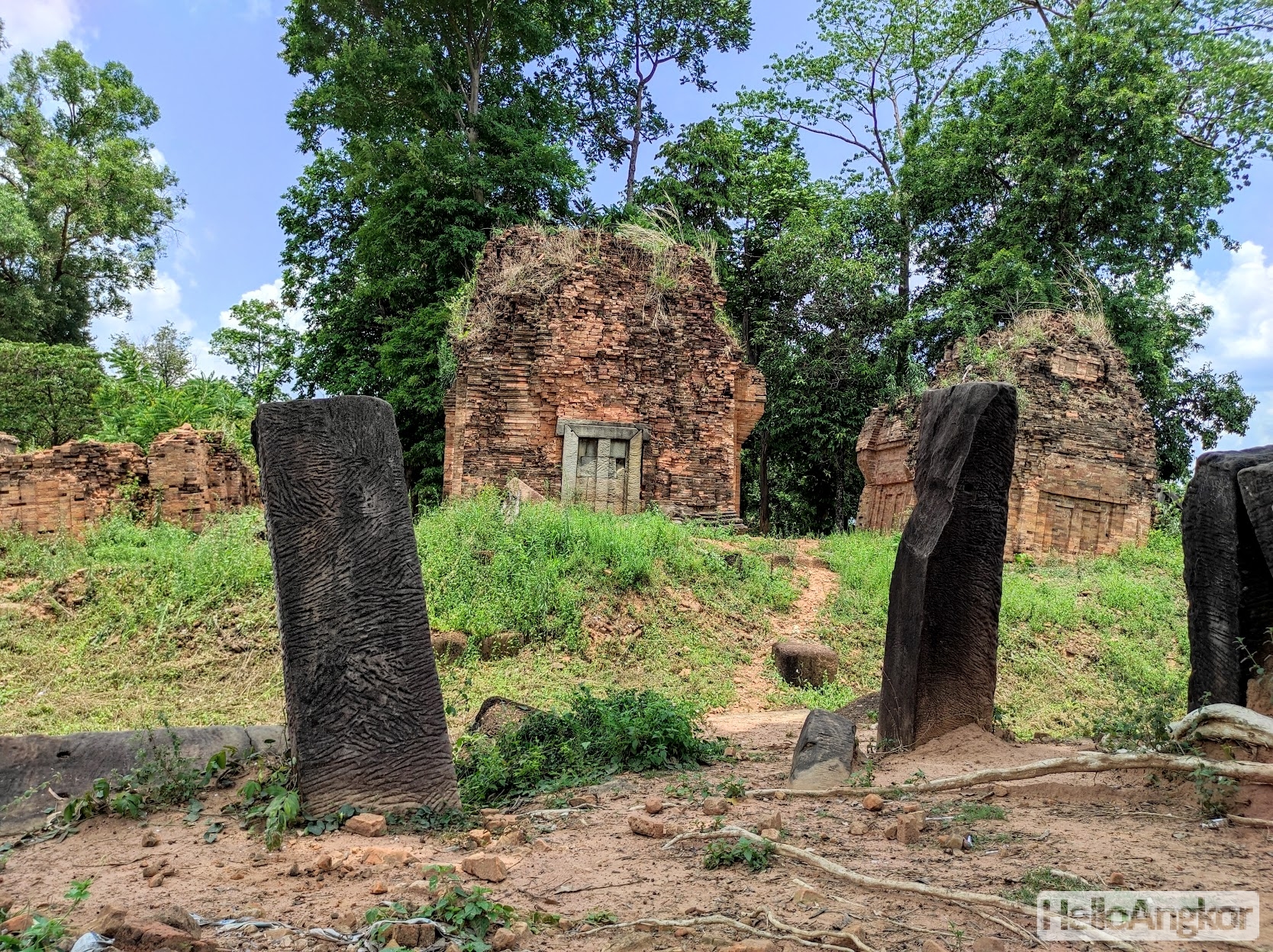
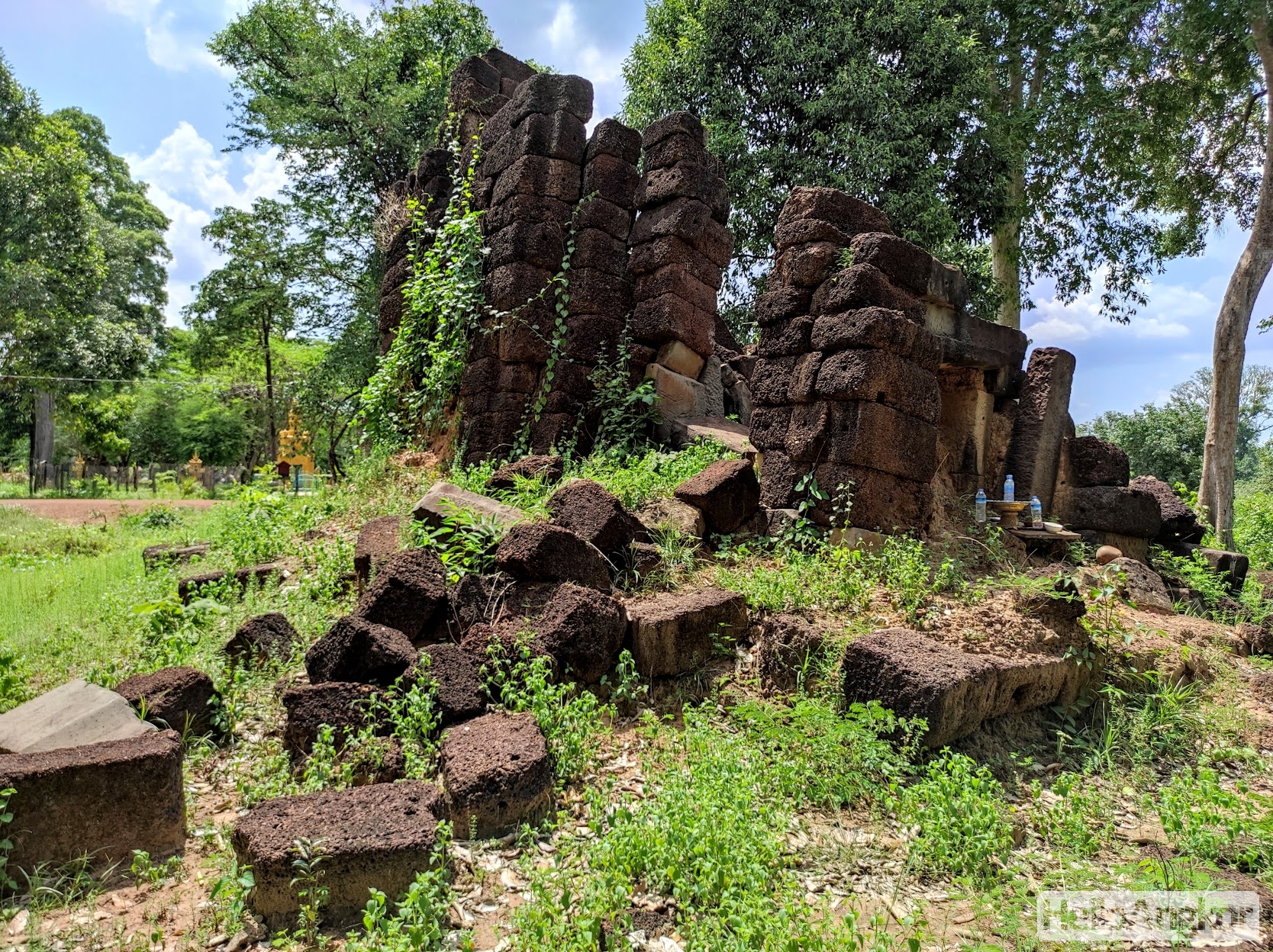
From there it was off to Sra’aem and just outside the town, there’s a dirt trail that leads for about 10 km to the Prasat Dap. The trail is a mix of deep loose sand and bog holes but passable on the Honda although probably not so easy mid-rainy season. The temple is an interesting one, featuring three elongated structures, a grand entrance gopura, and an outer wall enclosing what would have been a large brick temple and library. More on its page here. Like every good remote temple, it’s surrounded by cassava farmers.
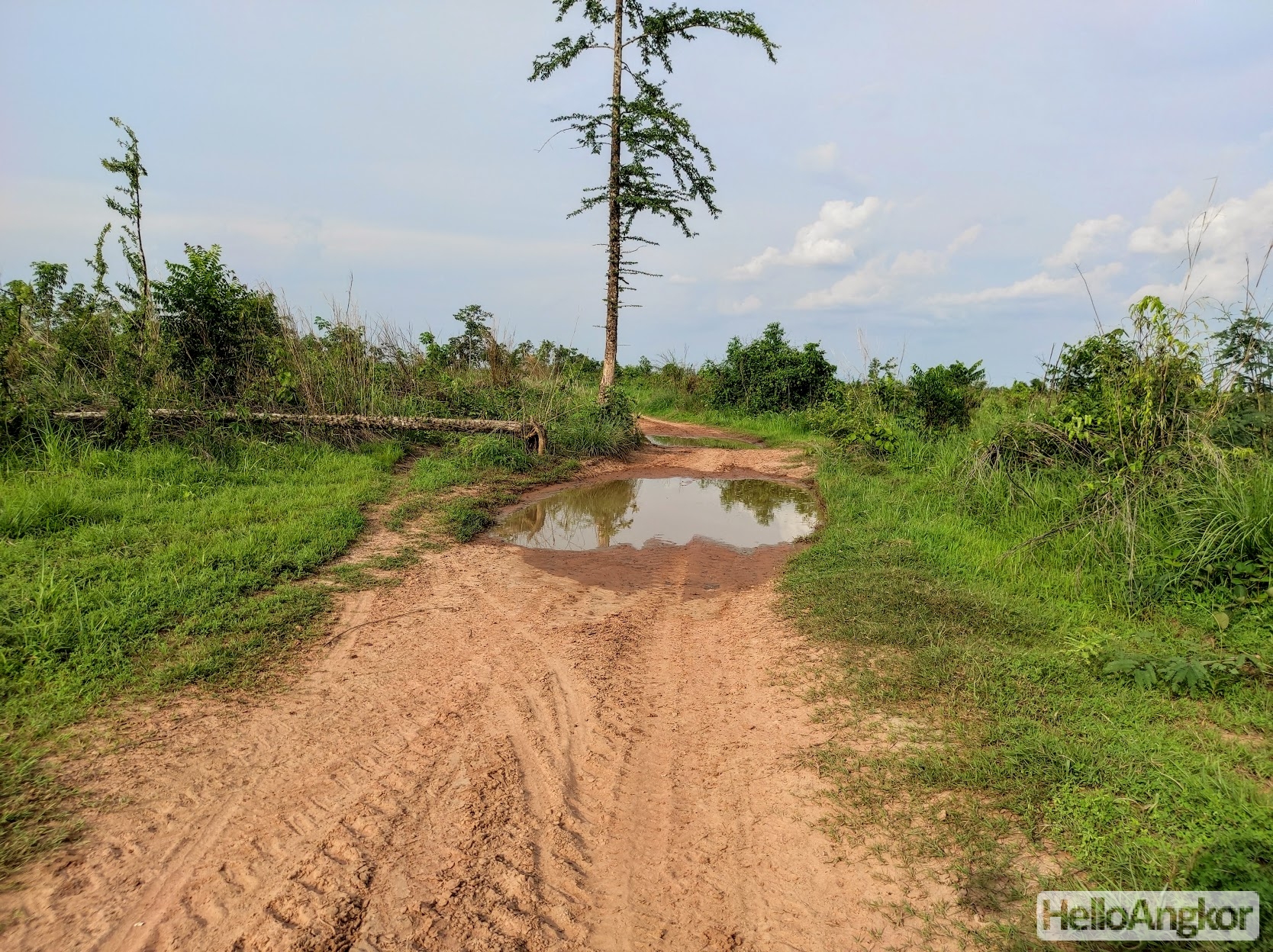

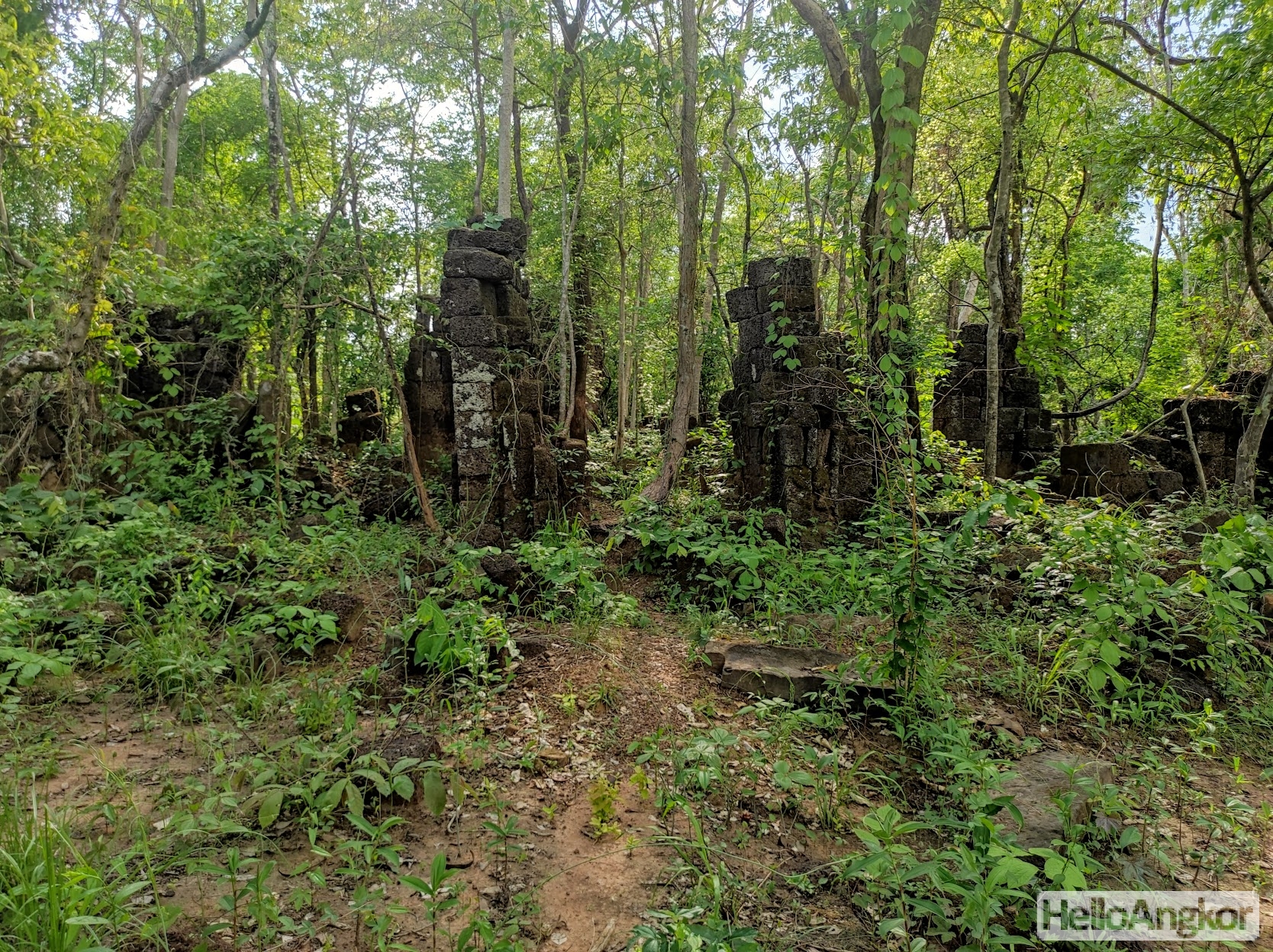


After Phnom Dap the day was at an end and it was back to Sra’aem to stay at the Piseth Pich 2P Guesthouse which is where I stayed last time and this time, an AC room for $12. It was more than fine.
Next day it was east out of Sra’aem and back onto dirt trails leading to Prasat Sneng Krabei North. A beautifully preserved site, for the most part, that features the remains of an outer laterite wall and gopura containing three sandstone temples that were sadly never completed. I say sadly because the reliefs that were partially completed on the south tower are interesting and unique, the other towers missing out completely.
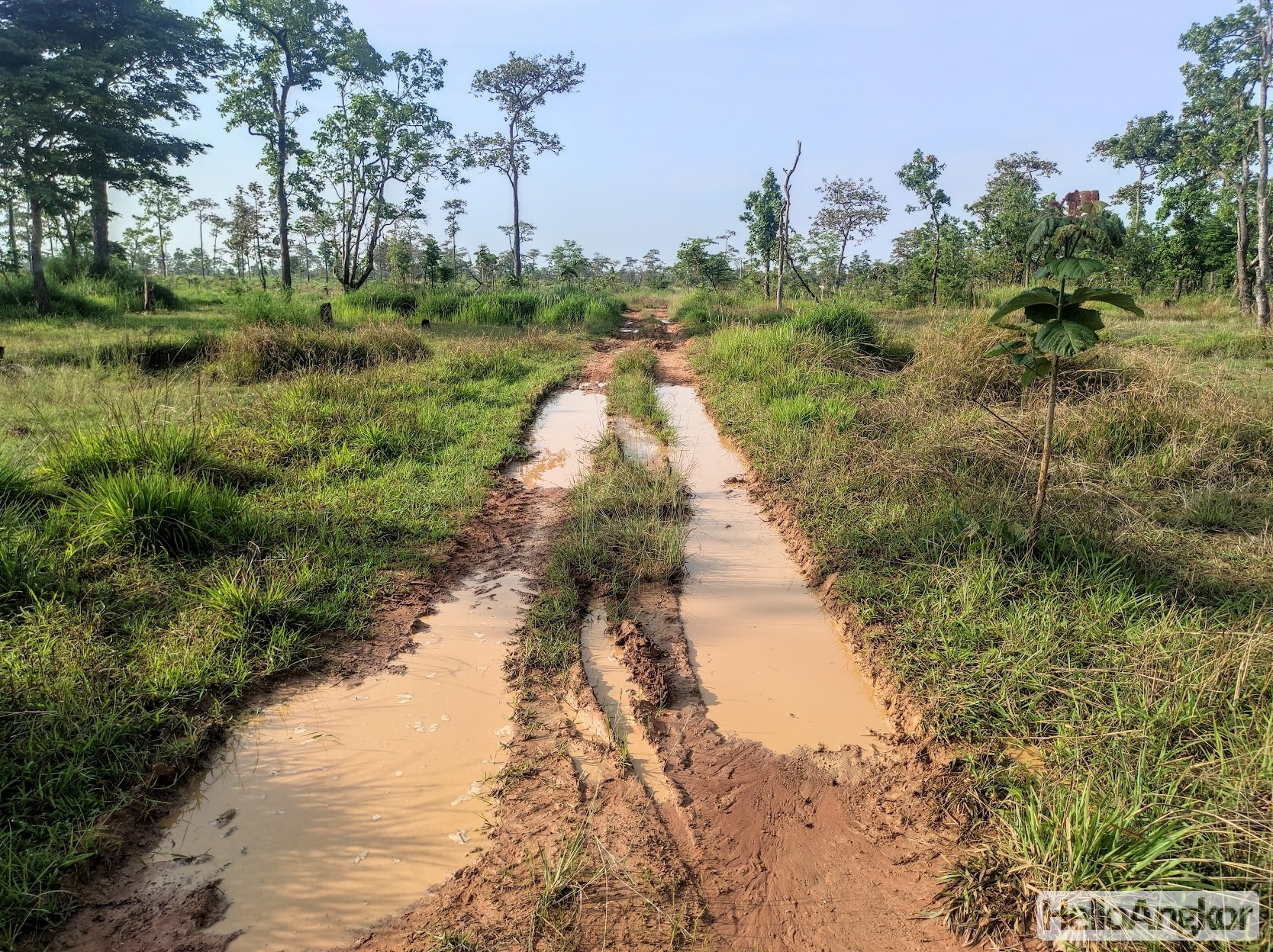

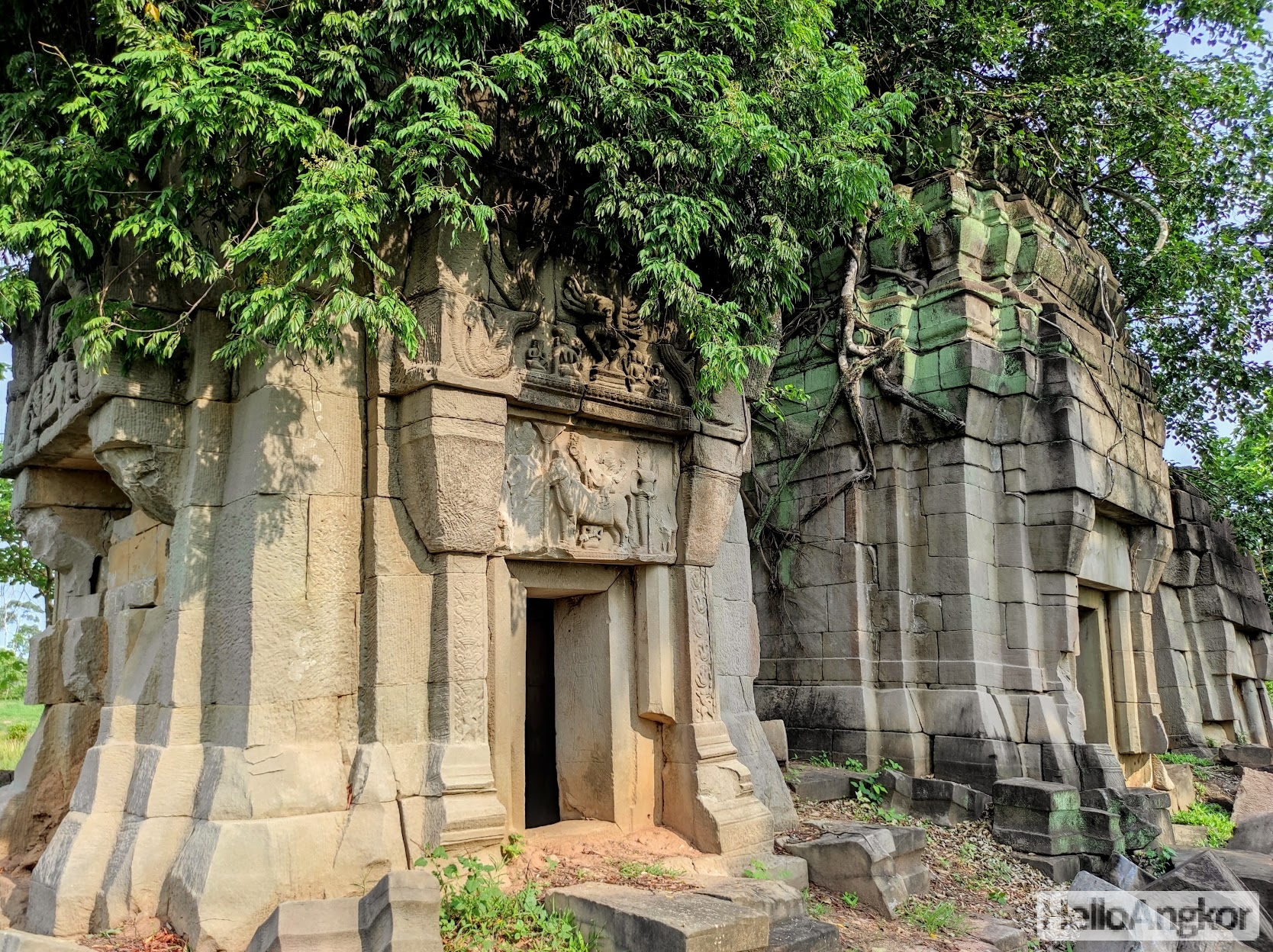
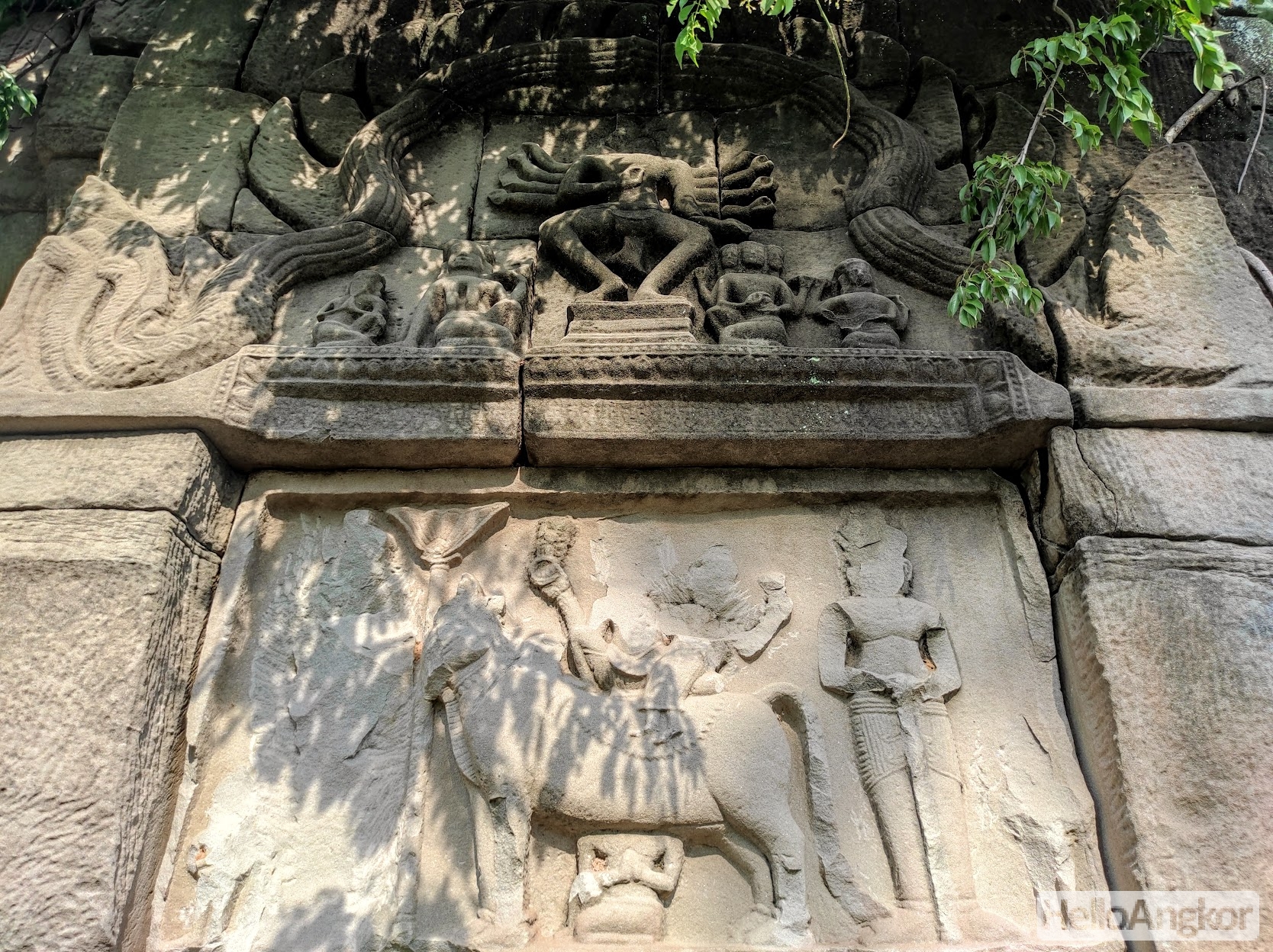

Just 1 km south of here is Prasat Sneng Krabei South, whilst sharing a name they are unrelated, apart from being on the same north-south axis, and originate from different eras, which tells a story in itself. This site having three temples constructed of brick.
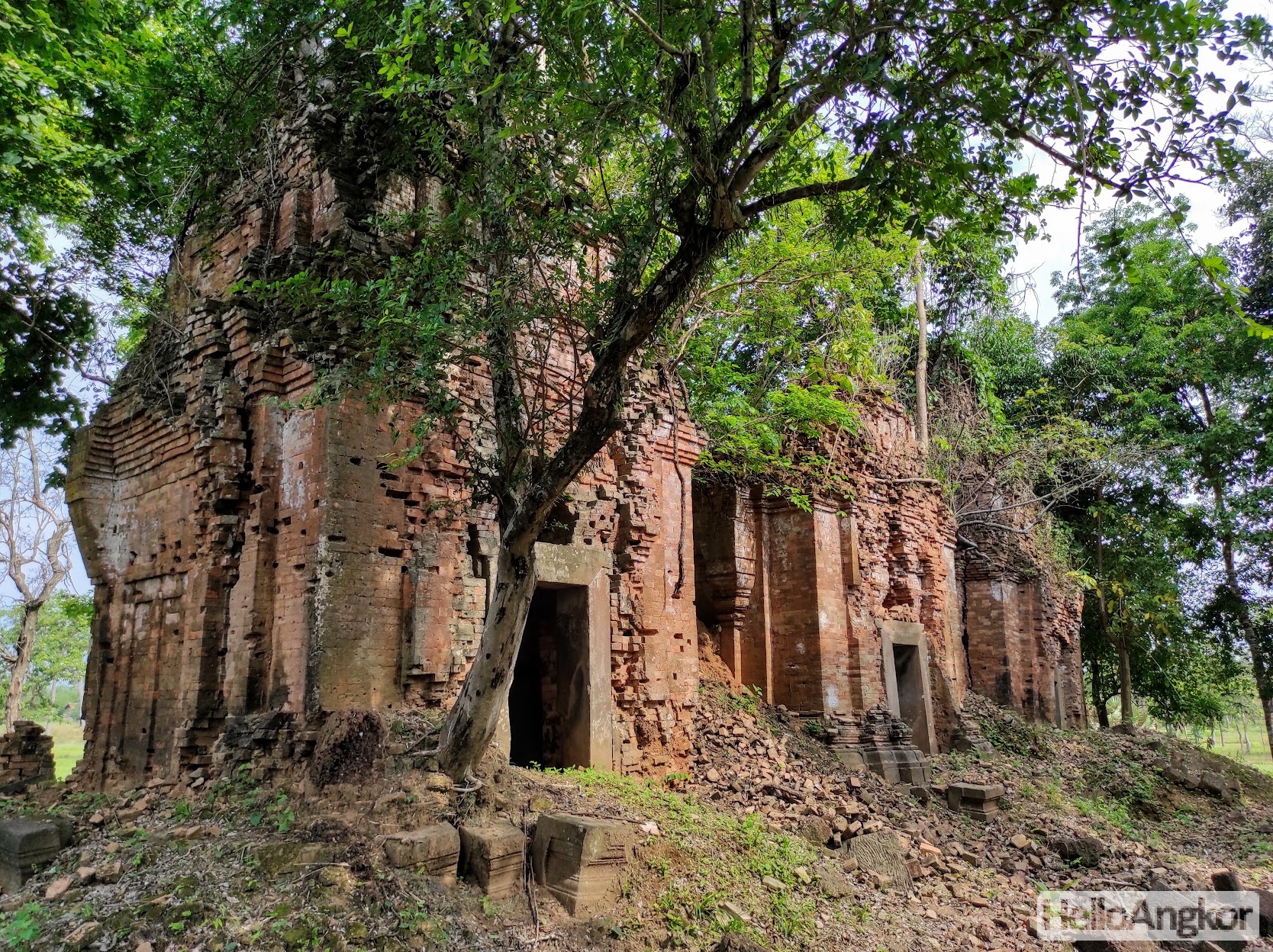
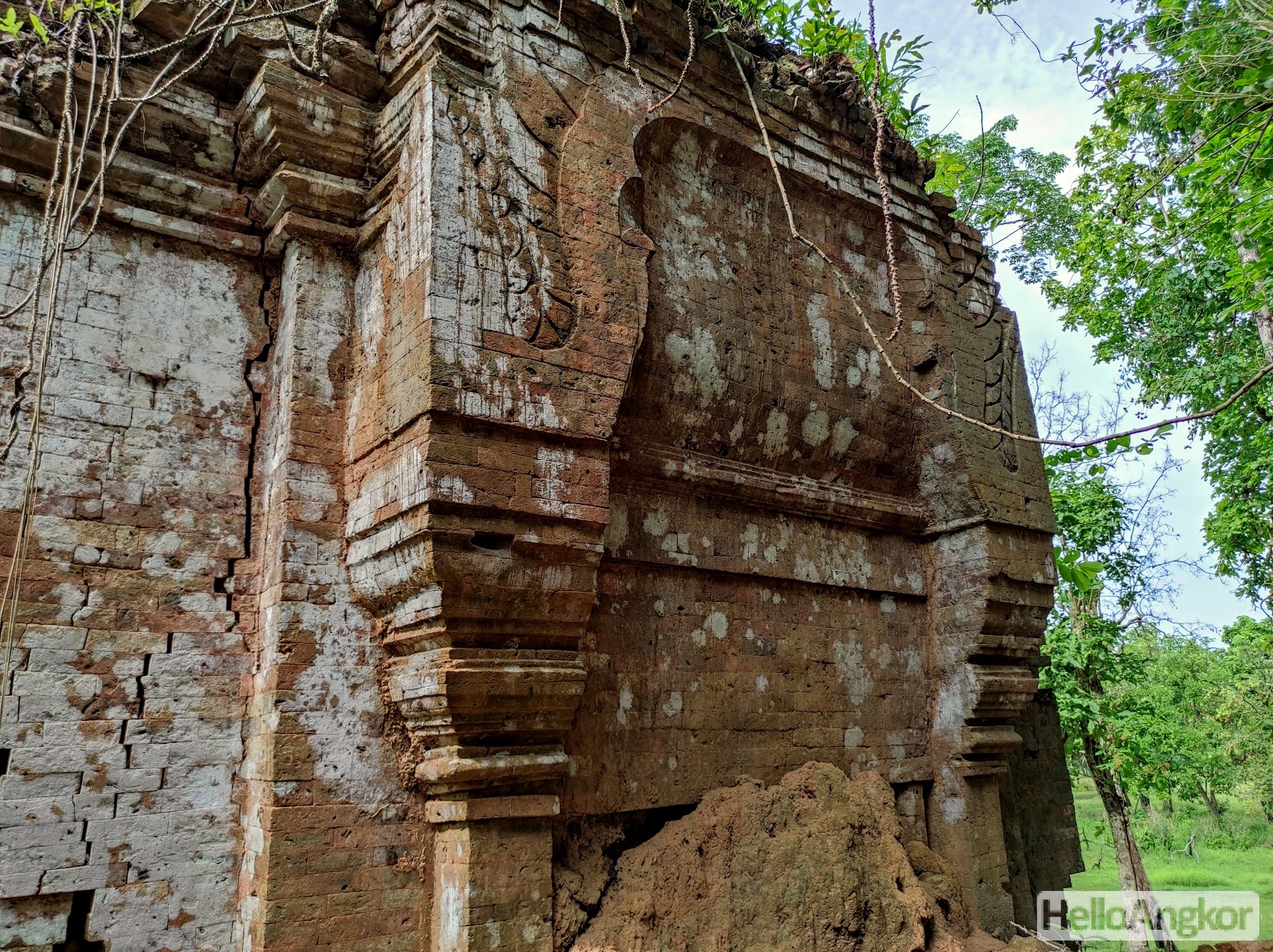
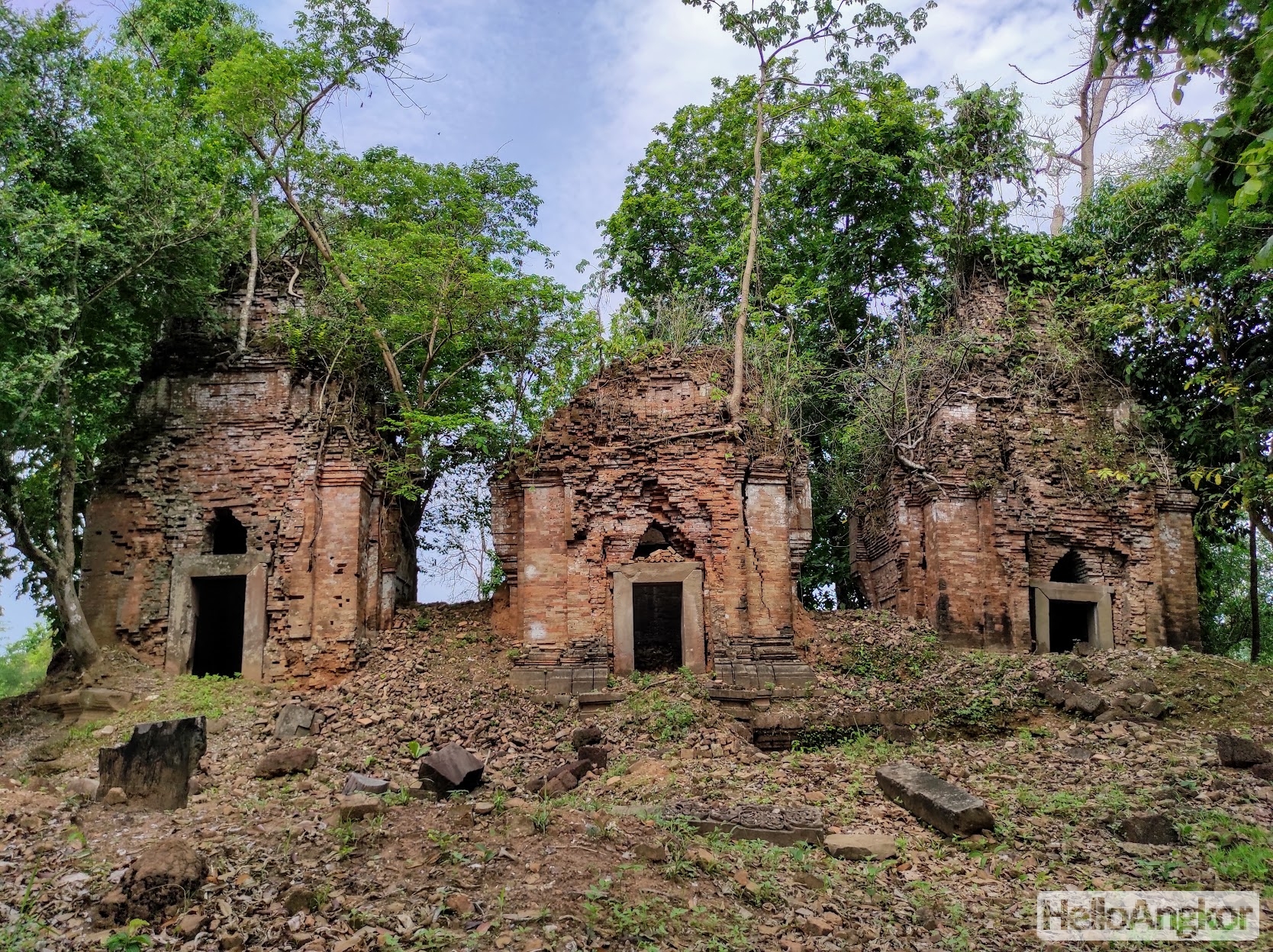
On the way out from these two sites, I realised there’s actually a really good road that heads northeast to Choam Khsant and perfect, as the next stop was north of there and to Prasat Thnal Svay. The dirt road leading to the temple is on the west side of the village and starts off fine but soon degrades although passable on a small Honda. Google maps shows access from the east but I did not see that trail and went to the south side and fortunately got some directions from a farmer to head across his field and then got onto what was a trail that hasn’t been used in a long time.
Prasat Thnal Svay is fascinating as it has one of those “palais” structures in a quite good state of preservation along with having an odd arrangement of two consecutive peristyle gopuras according to the layout plan. The site is cleared only in part but mostly matted in thorny vines making it best to wait until authorities clear the site to get a full view. Those thorns would come back to haunt me, more on that later.

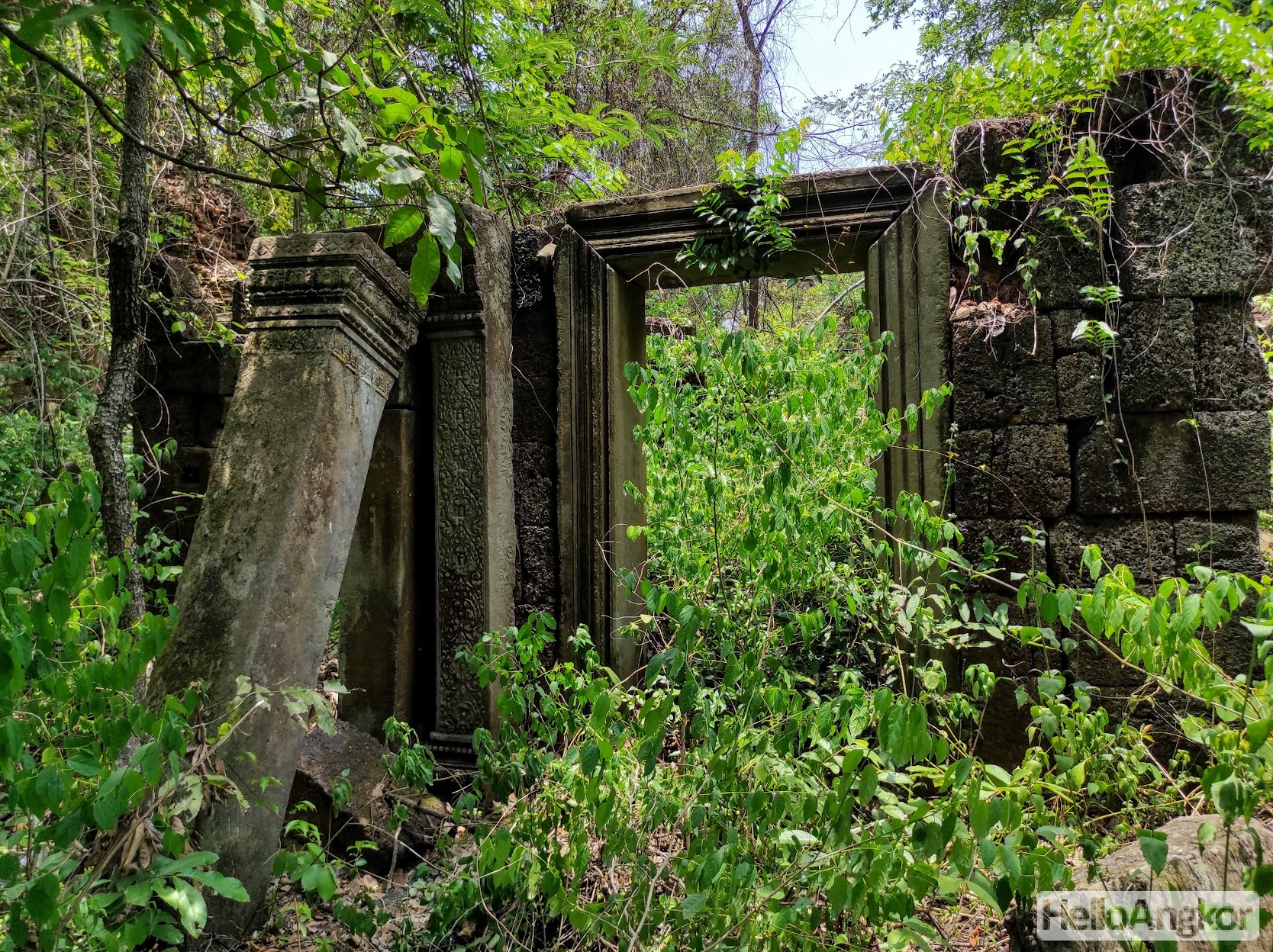

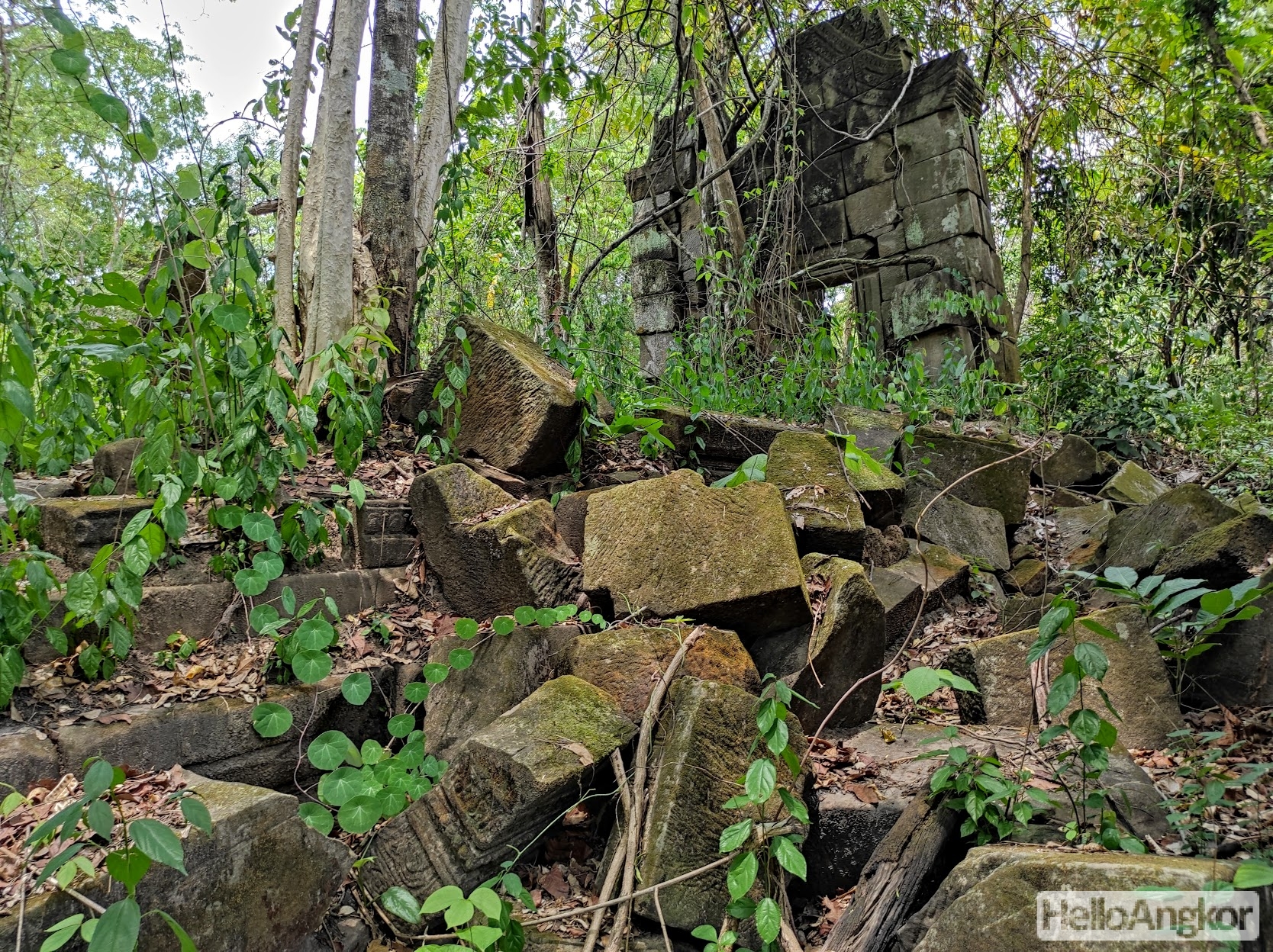
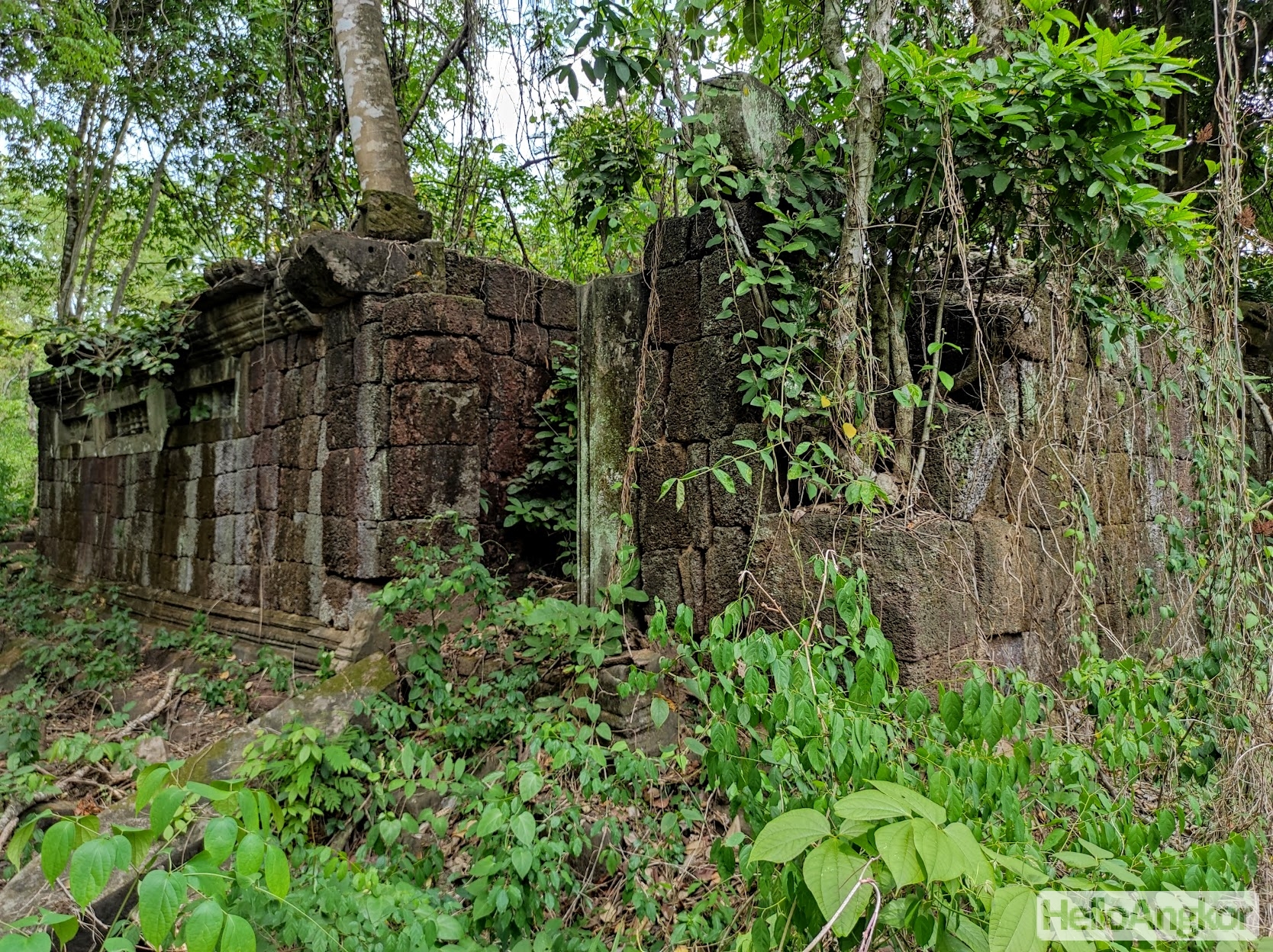
From there it was back south and on the southeast side of Choam Khsant there’s a pair of trails that lead to the temples of Svay Thom and Kang Het, It’s easy enough to get to the proximity of the sites by moto but they are with reasonable access. I decided to leave them both until I have a colleague alongside as there are too many risks as a solo traveler way out here. Otherwise, wait until they are cleared and access trails are added.
From there it was towards Neak Buos temple for a return visit, first stopping at Prasat Ta Ros which is a site carrying an important inscription and featuring three brick temples, library, and an outer wall and gopura also in brick.


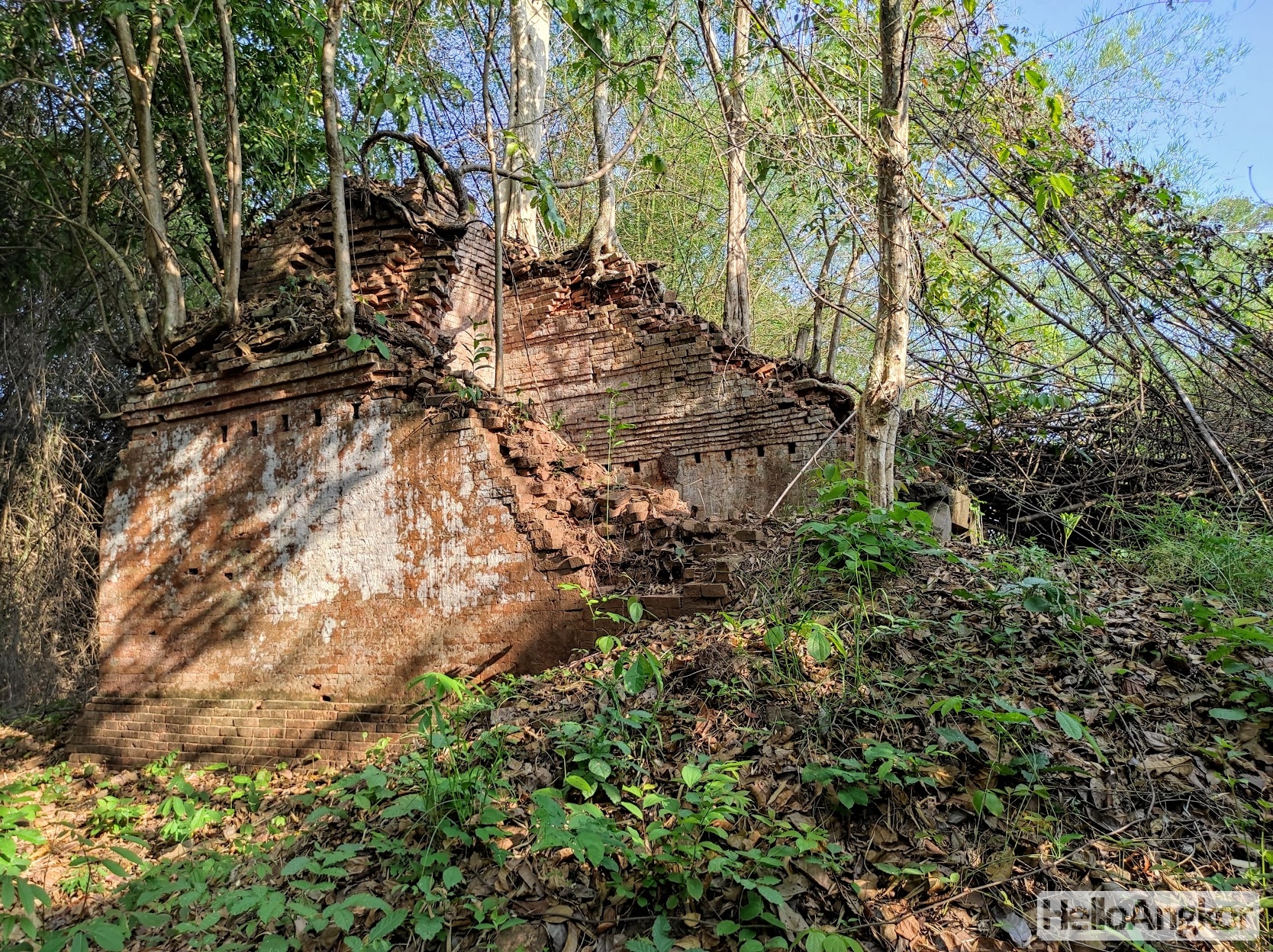

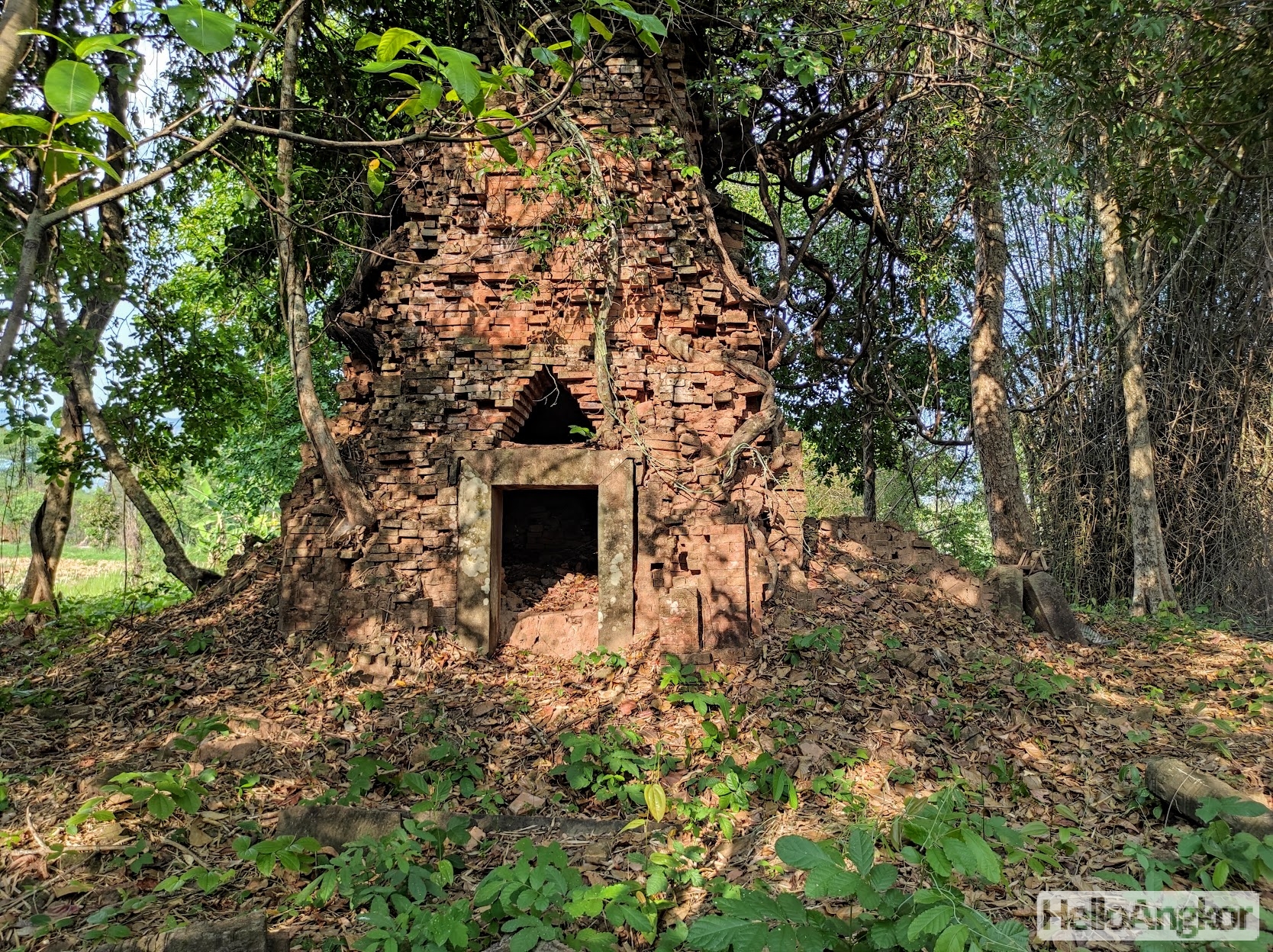
From there I wanted to take a back trail around into Neak Buos but in hindsight, I wish I had just taken the usual way. In the end, after plowing through loose sand and watching the sun slowly fade I made it to Kuk Srei Temple, another so-called “palais” and then just enough daylight to see Neak Buos again and what wonderful work the local authorities are doing to keep the site clean. They have even added a solar-powered light at the main shrine! More about the site here.

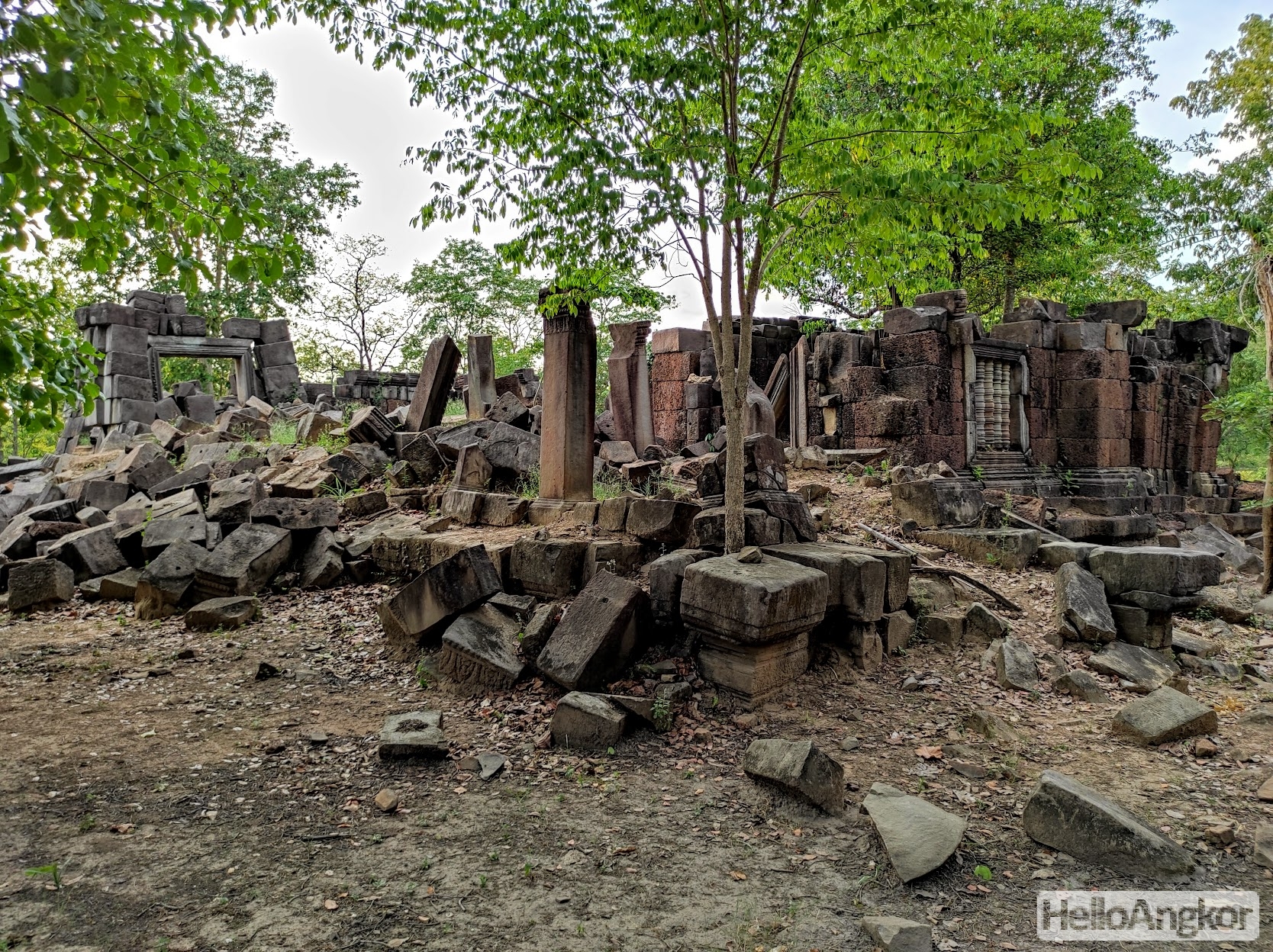
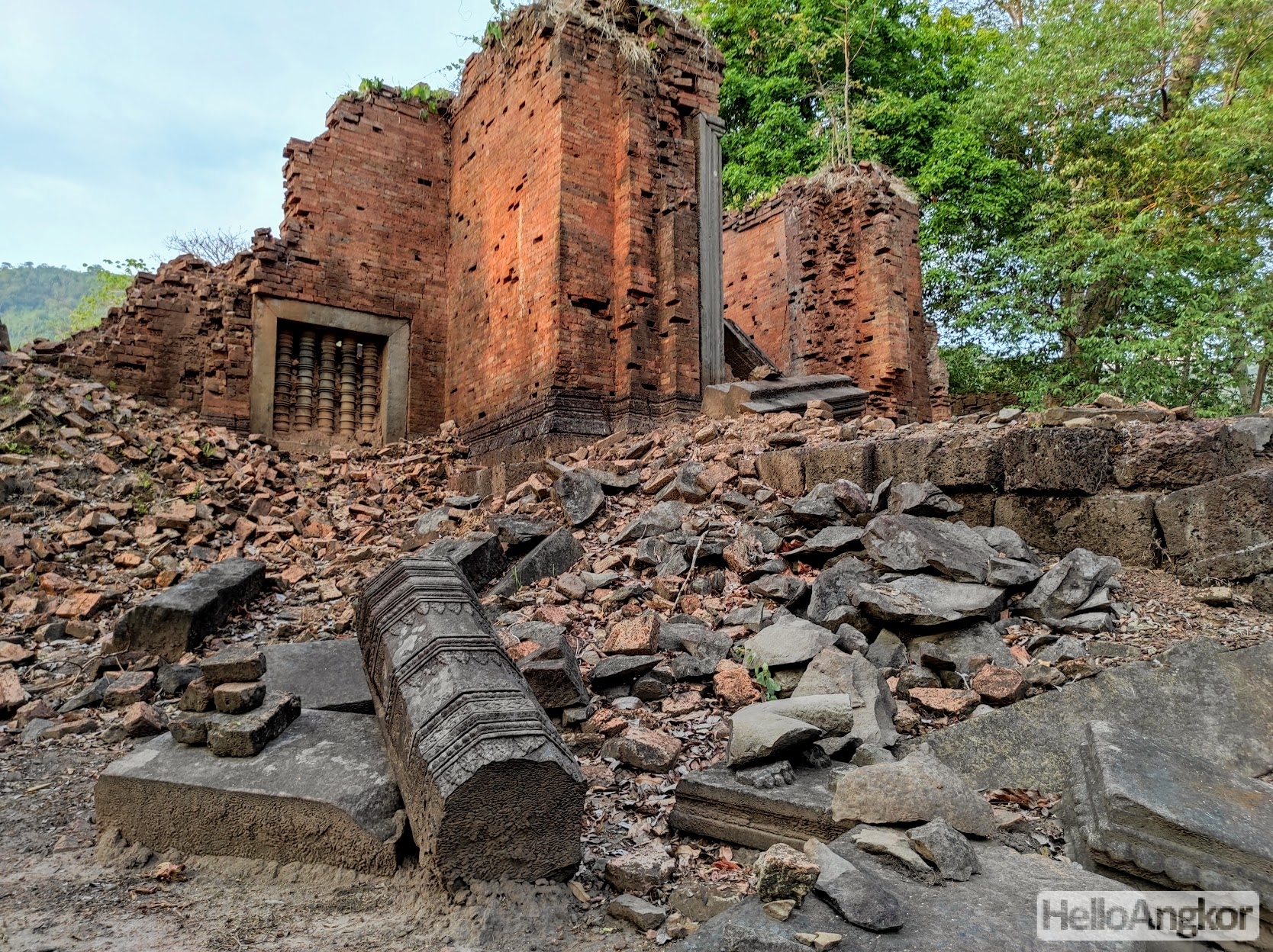


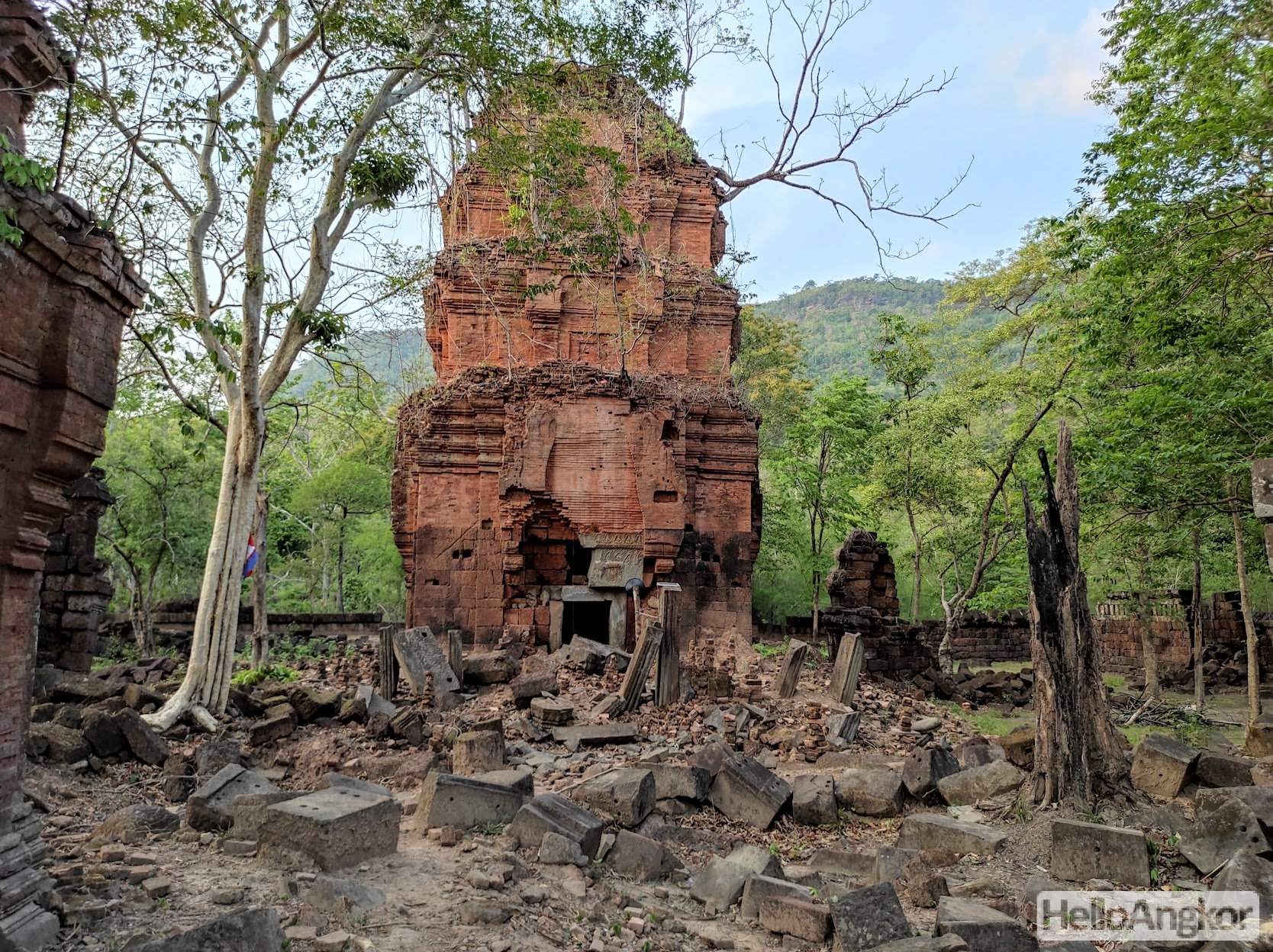
After that it was back to Choam Khsant in the dark, staying the night at the same guesthouse as last time, Leav Sean Guest House which was fine. The next day, following beautiful sealed roads toward the Laos border, to see Prasat Tram Preal. The mostly ruinous but still charming site features the remains of three brick temples, gopura, and outer walls.
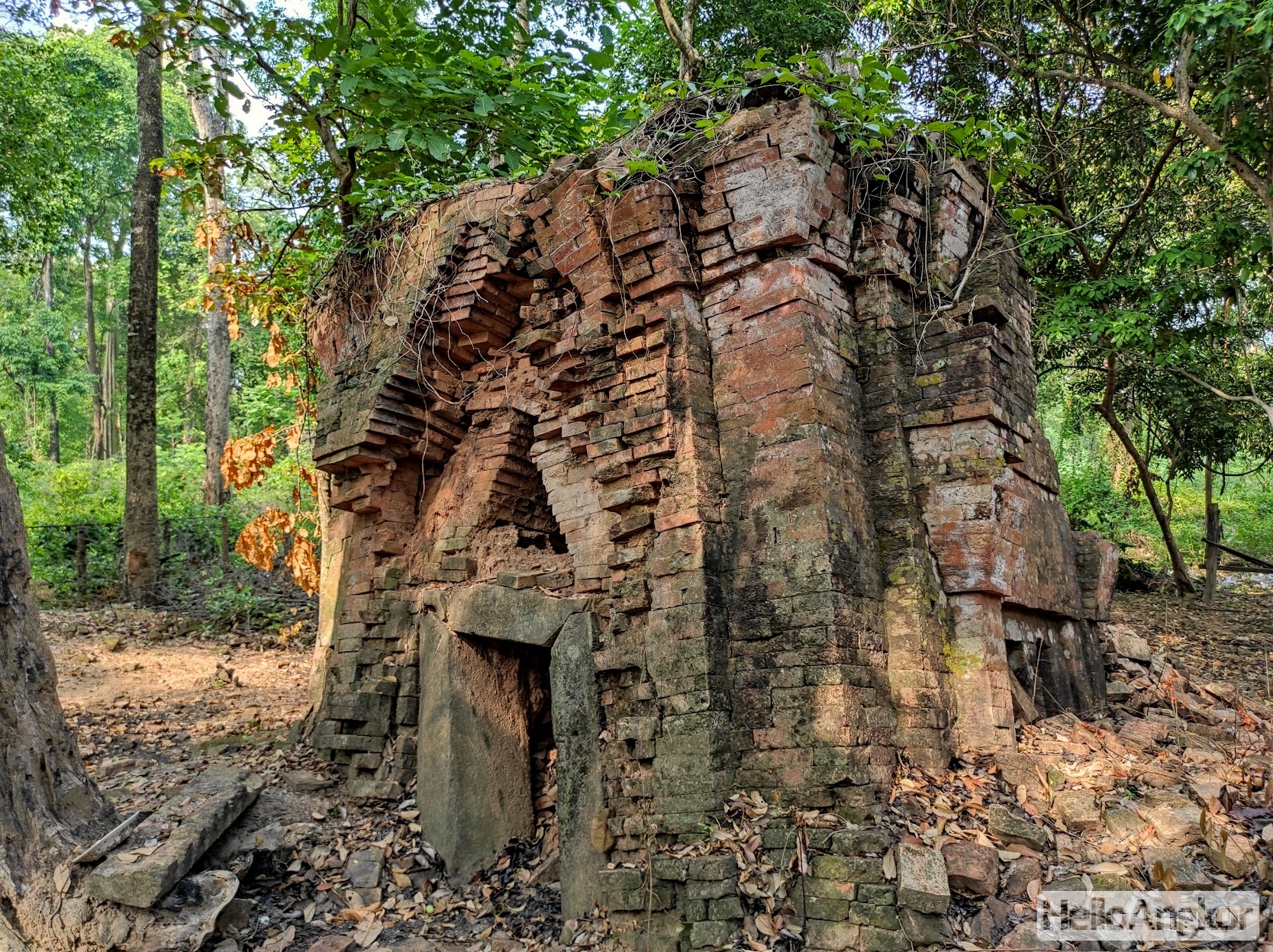
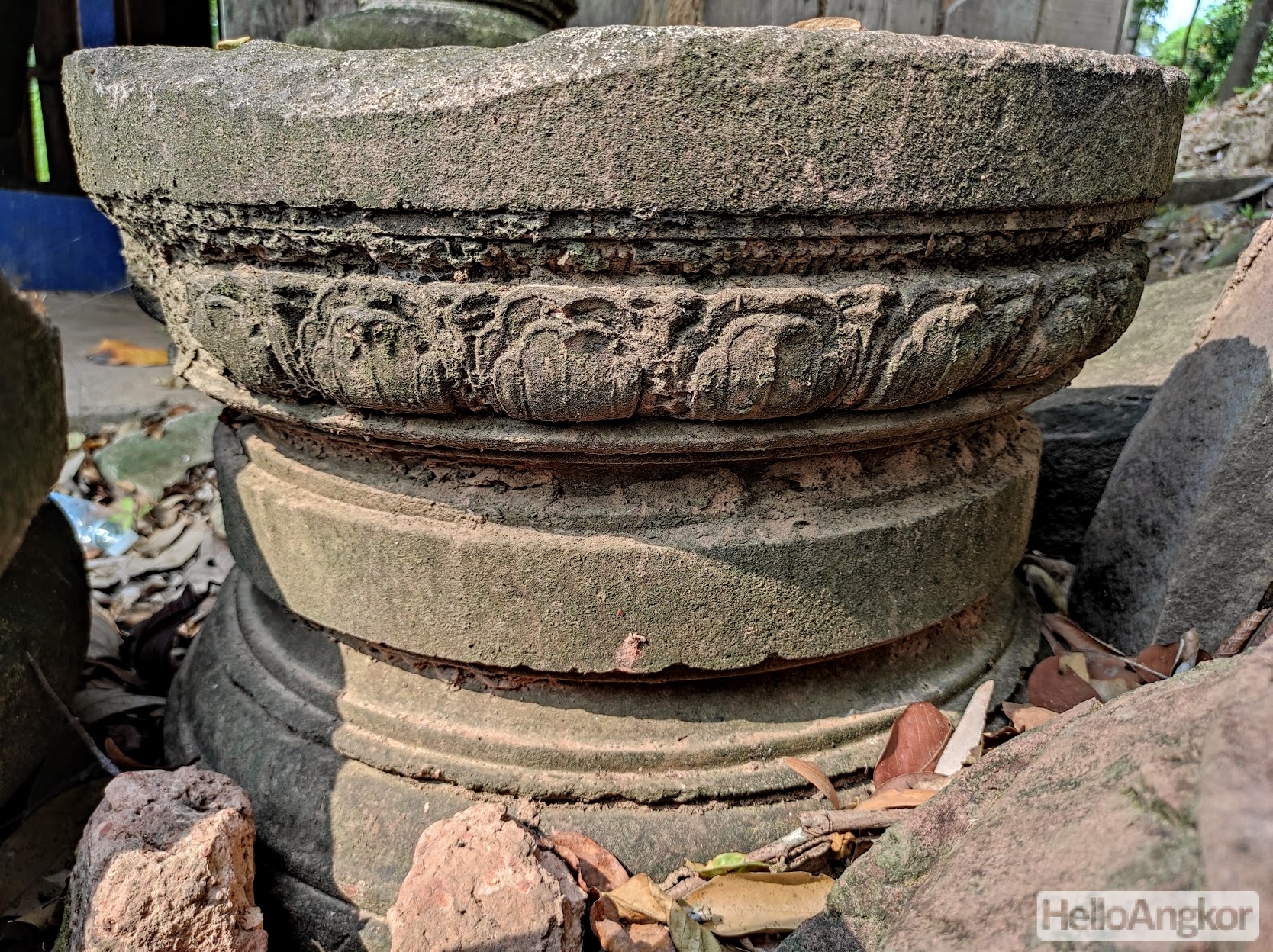
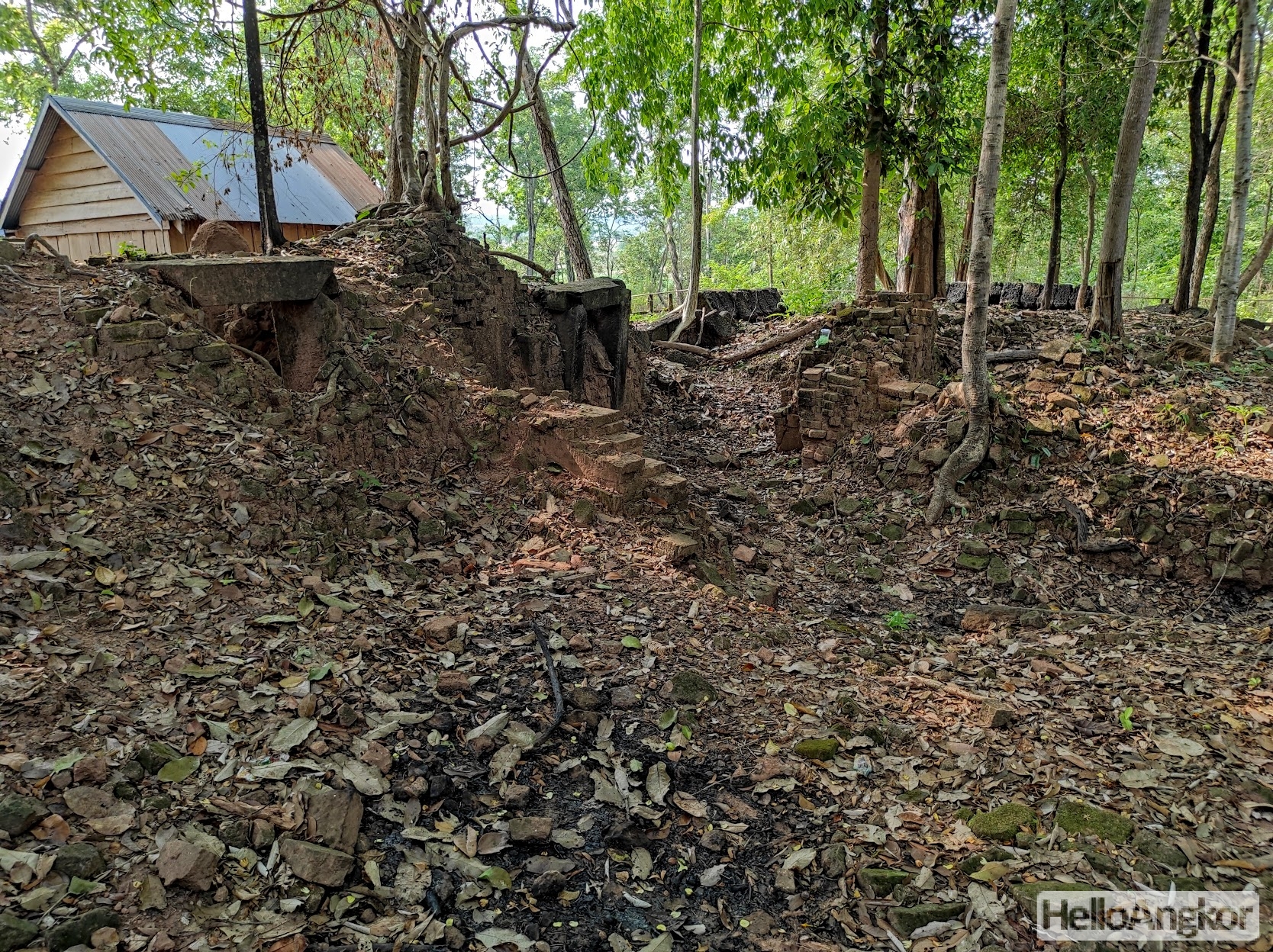
From there, continuing in the direction of Laos and to the fork in the road at Trapeang Kul and then following the dirt road alongside a reservoir to Lom Neang Temple. It’s a charming area and charming temple site that features remnants of a double enclosure, sandstone gopura and library, plus a large brick shrine, still mostly standing. The design of the main shrine is a little unique.
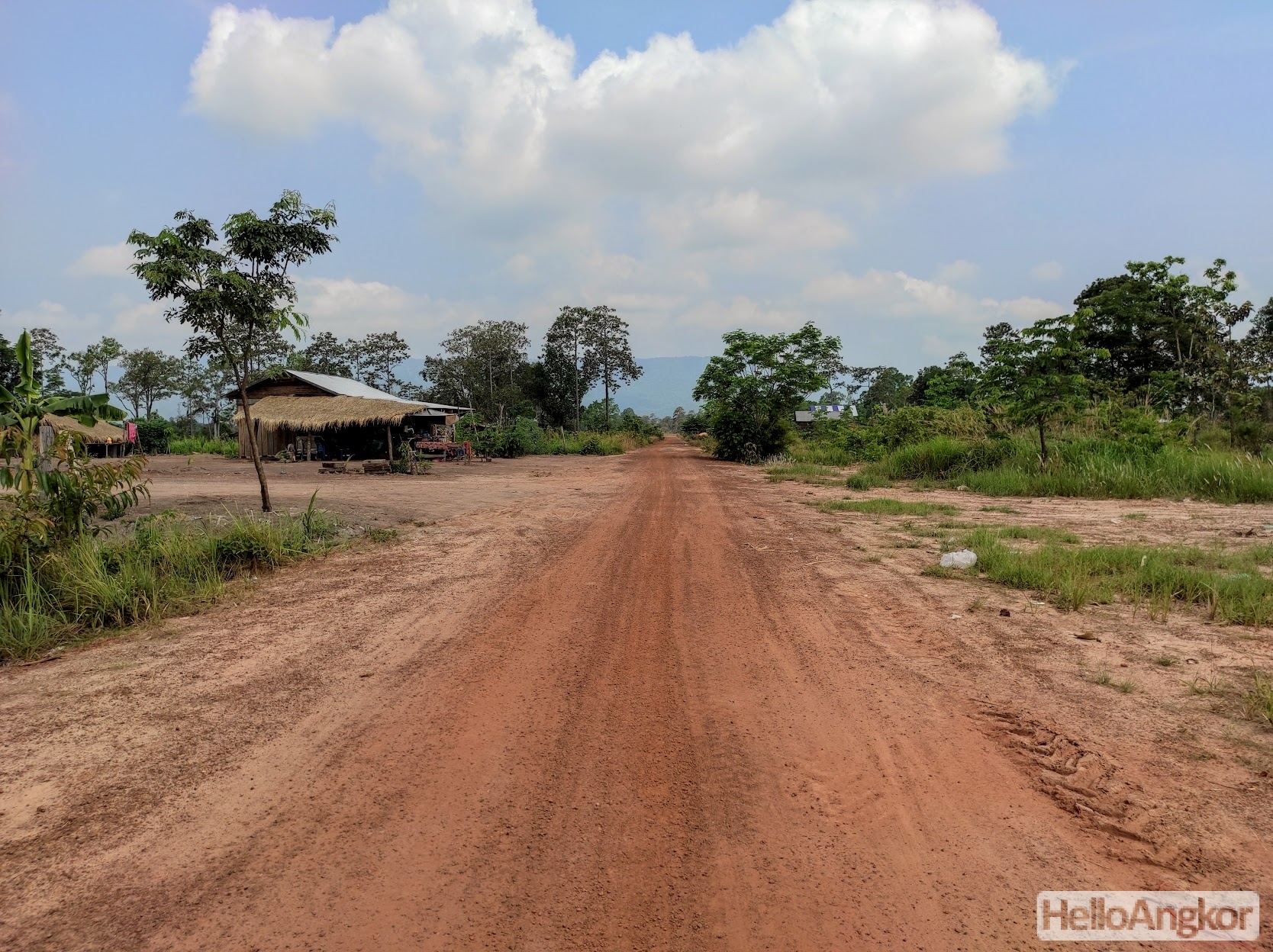


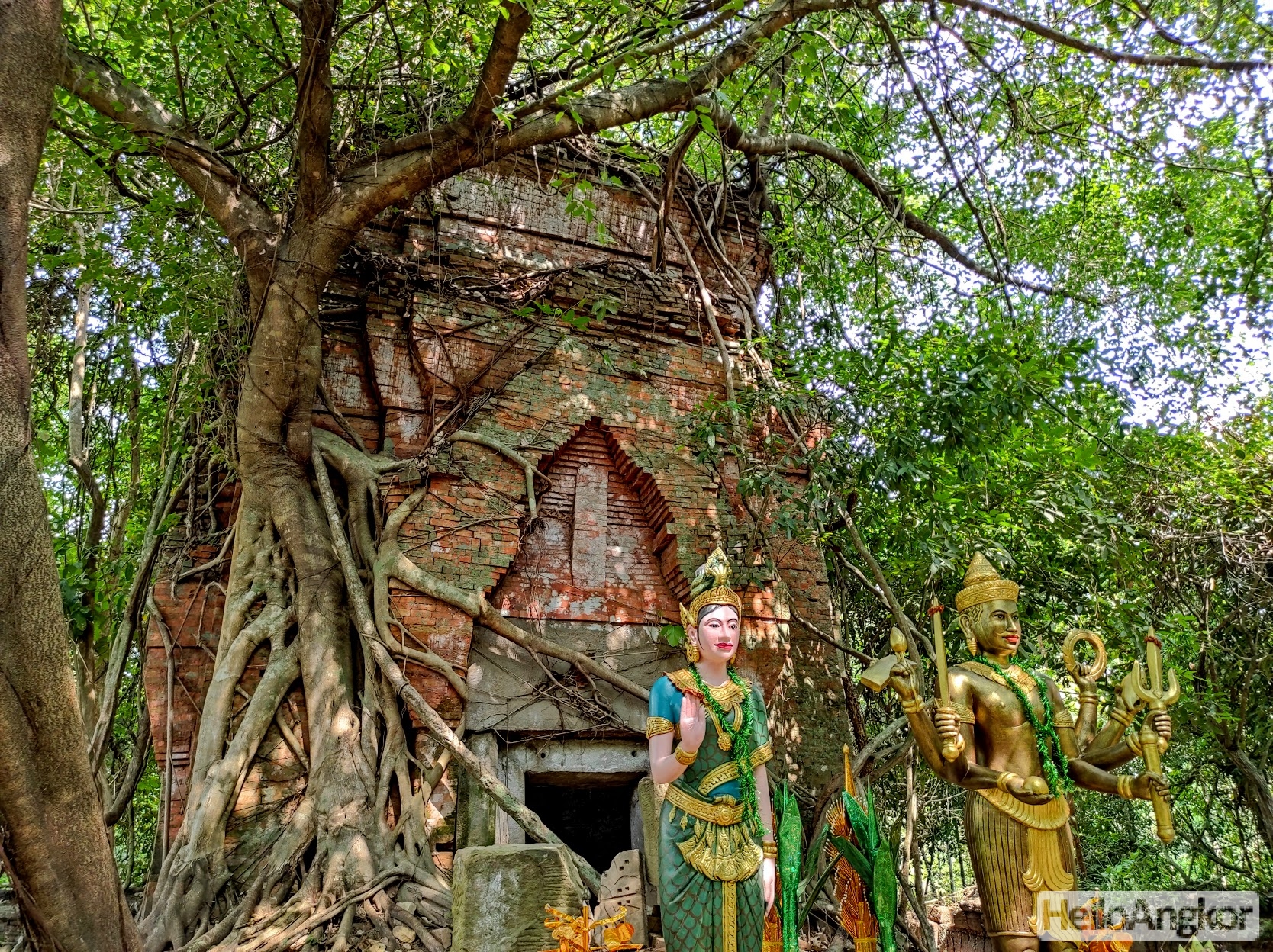
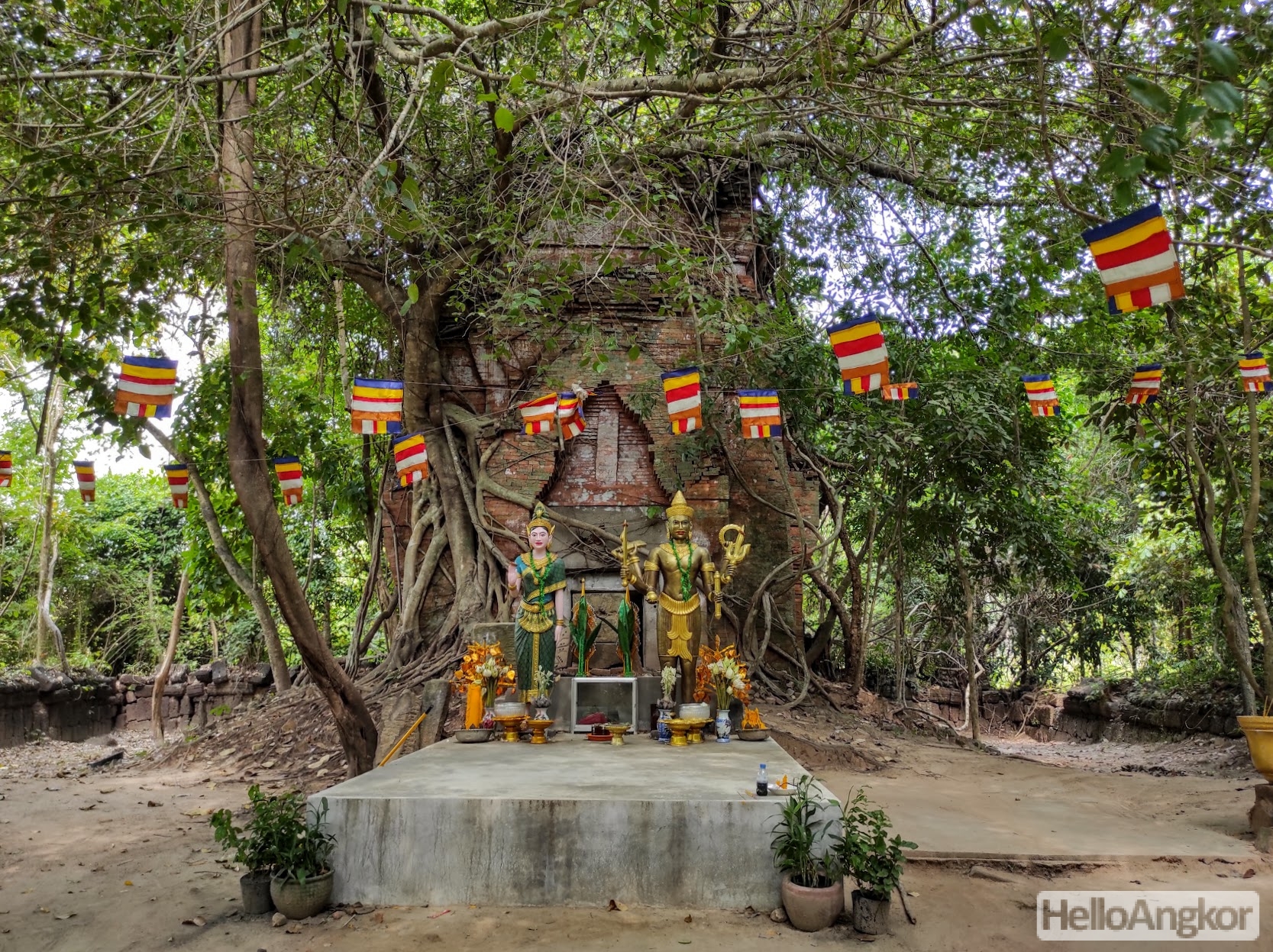
After that, a long ride in the blazing heat to Preah Vihear city and then to Phnom Preah Lean Temple. Located right beside the main road with a wooden staircase leading up to an odd site consisting of the remains of a brick shrine fronted by a larger cruciform-shaped sandstone structure.

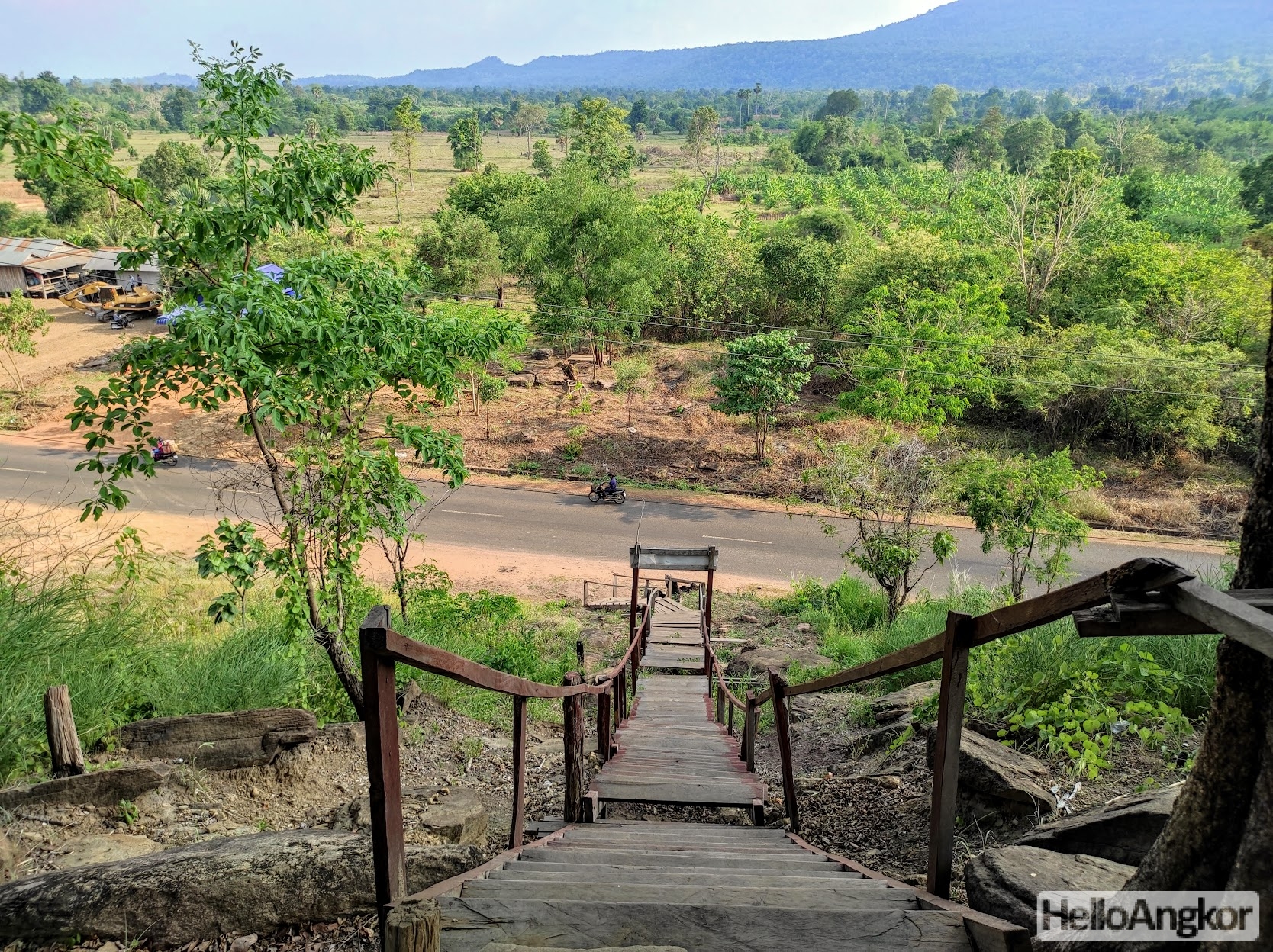
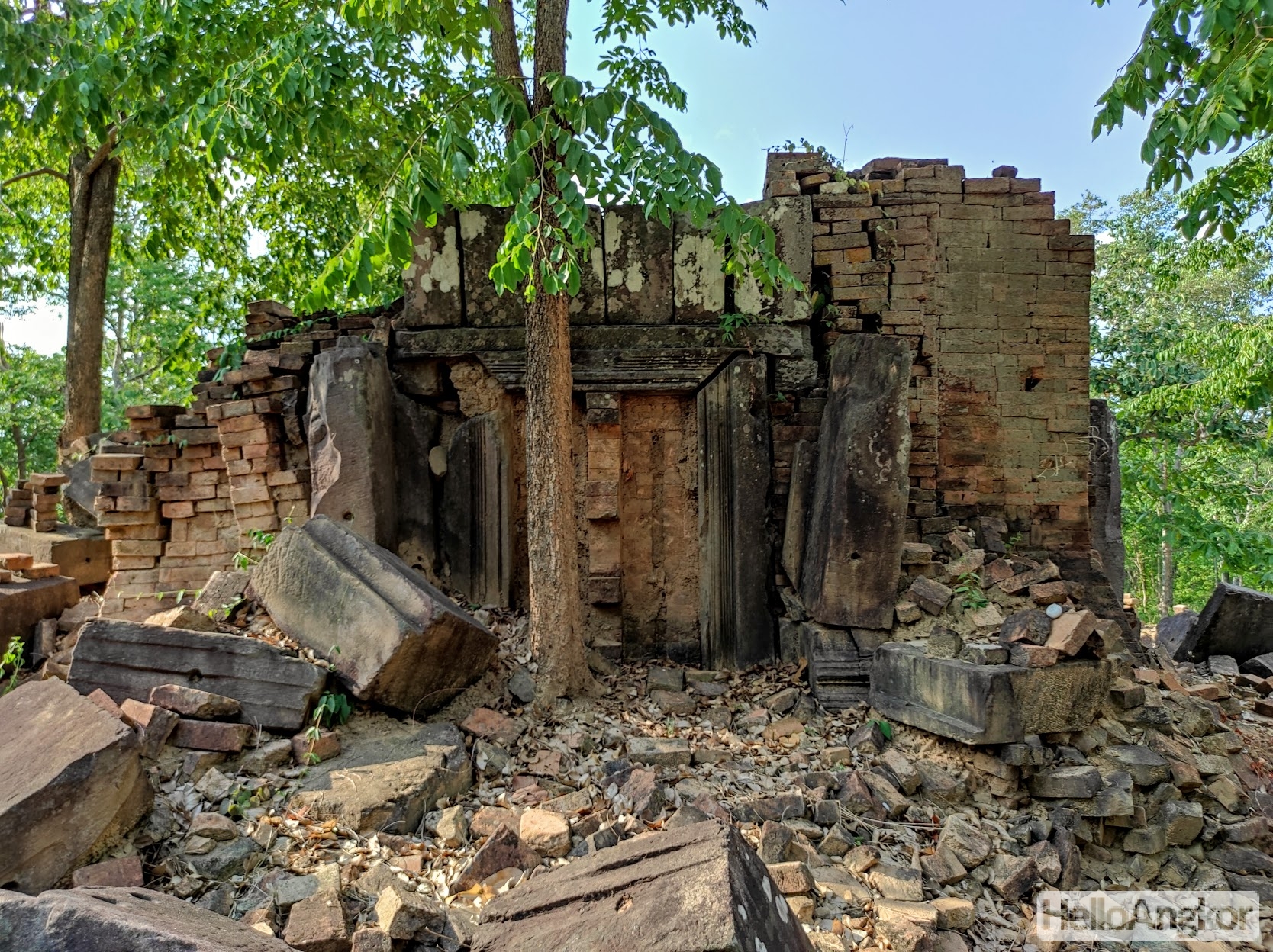

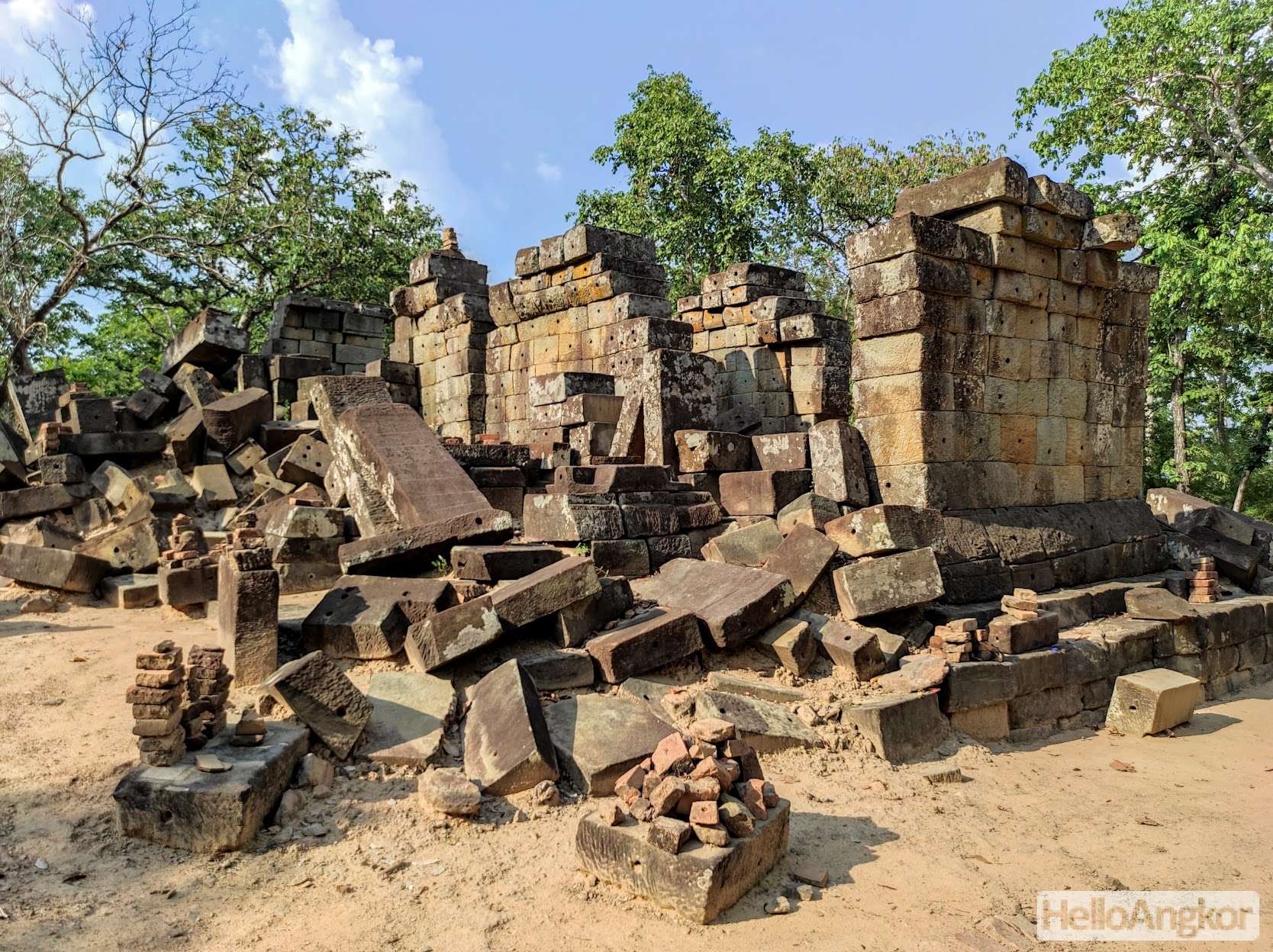
There is a site nearby here, Prasat Trapeang Kuk, I have to leave it for another day as I need to get to Kampong Thom before nightfall and hopefully before the looming storm sets in, with a quick and easy stop at Krapom Chhrouk Temple. The sites built entirely of laterite with an outer wall with gopura, library, and a shrine that opens on all four sides.
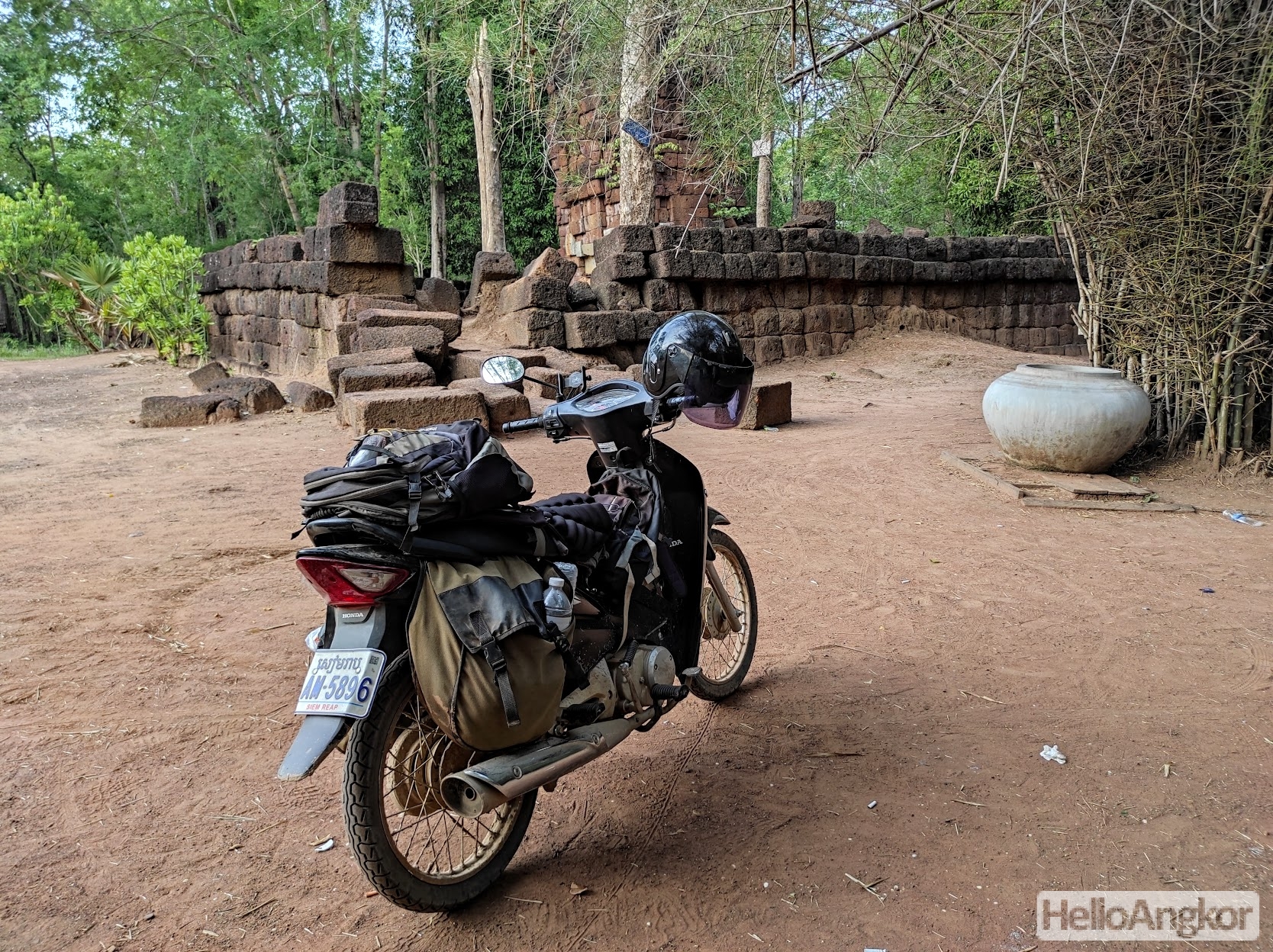
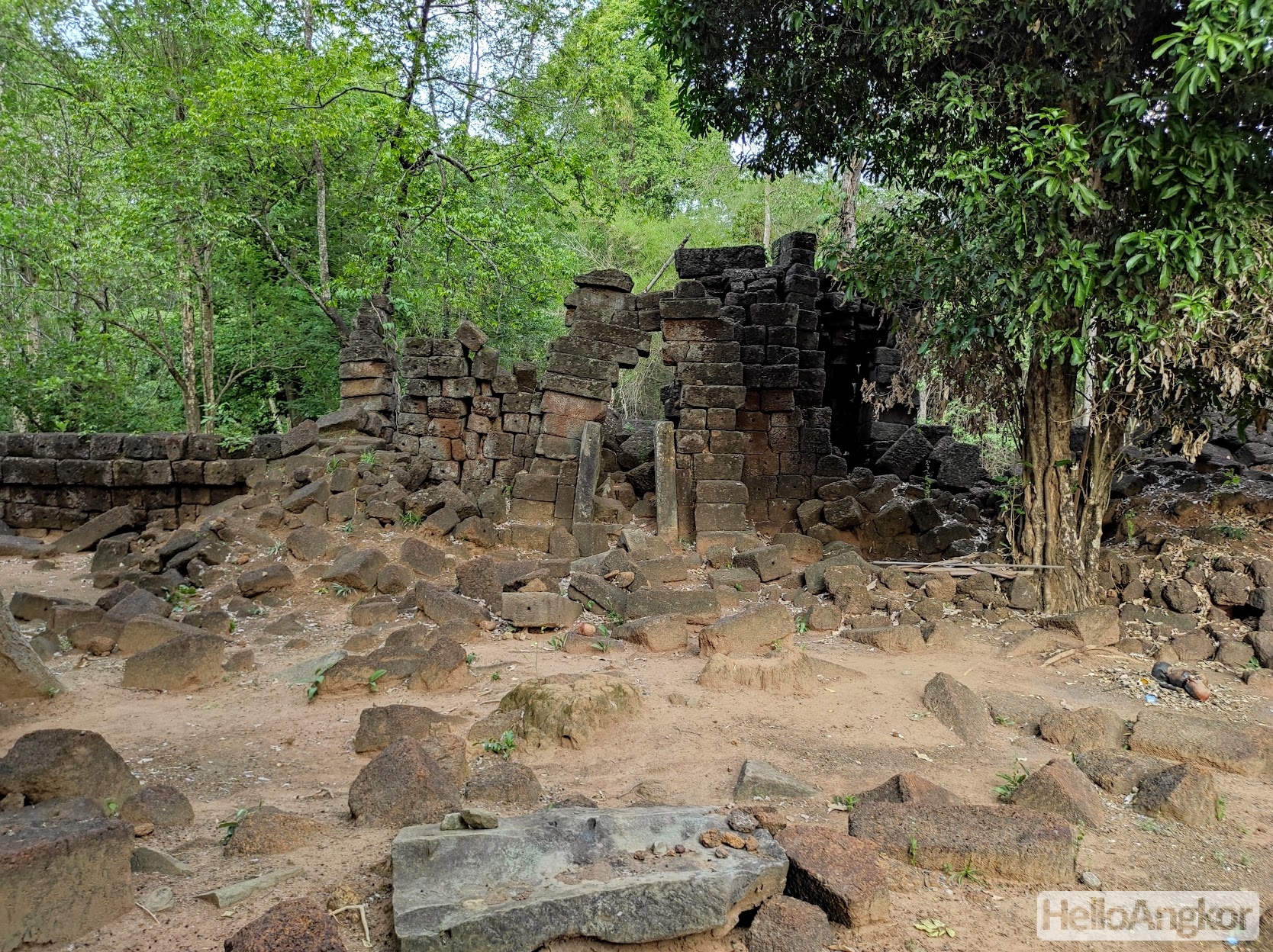
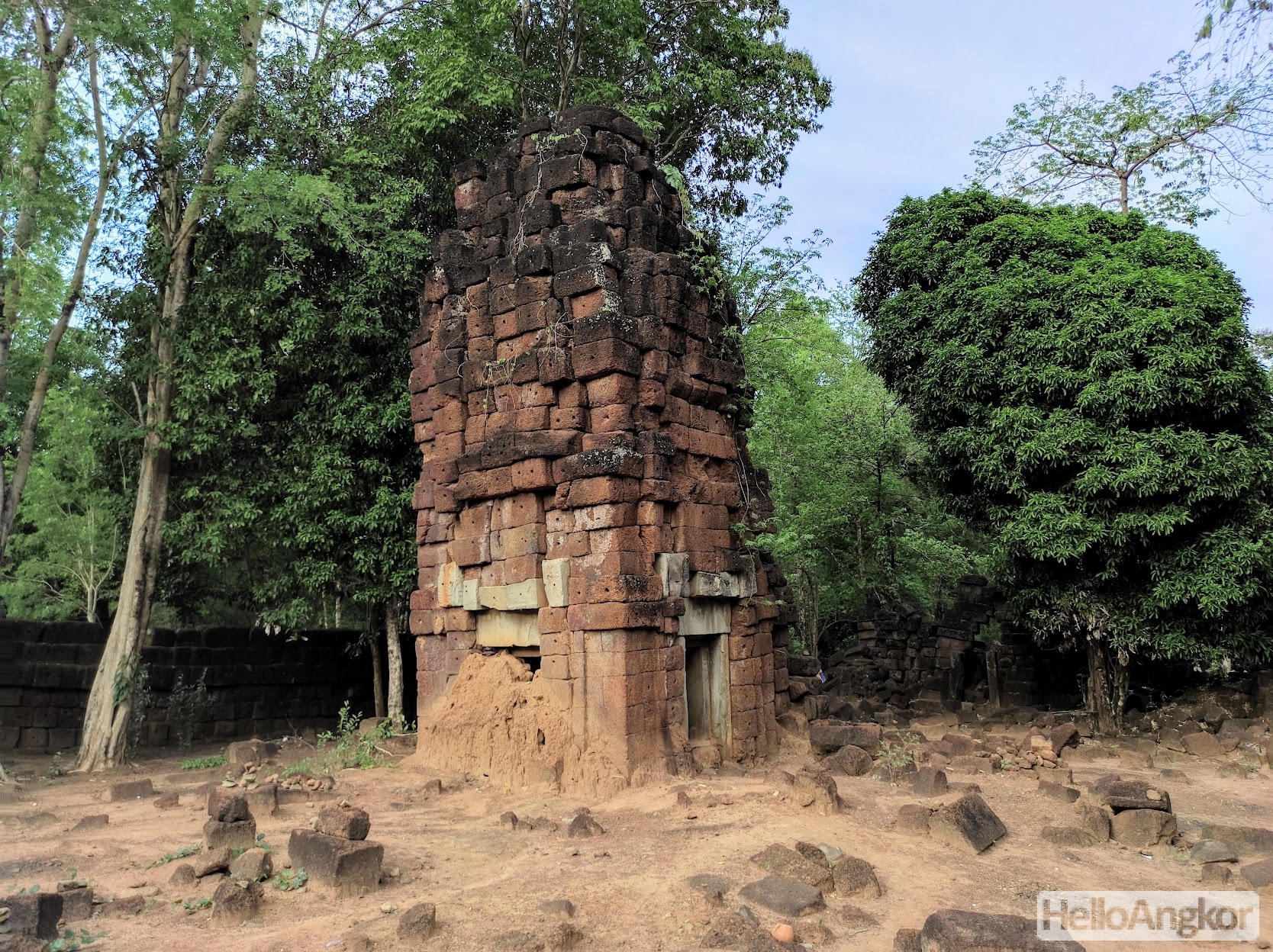
After that, it was a long ride making it to Kampong Thom just after dusk and getting a room at the same guesthouse as the last time here, Ban Houn Guest House.
The next day, with a helpful colleague along for the ride, it was off to take another look at Wat Kampong Thom and see inside the new pagoda with the murals in progress, later a visit to Wat Sleng again, this time able to find the key holder to the pagoda who was kind enough after some sweet talking by me colleague to open things up. Apparently, the pagoda was to be demolished but superstition kicked in and they decided to leave it standing. Good thing.
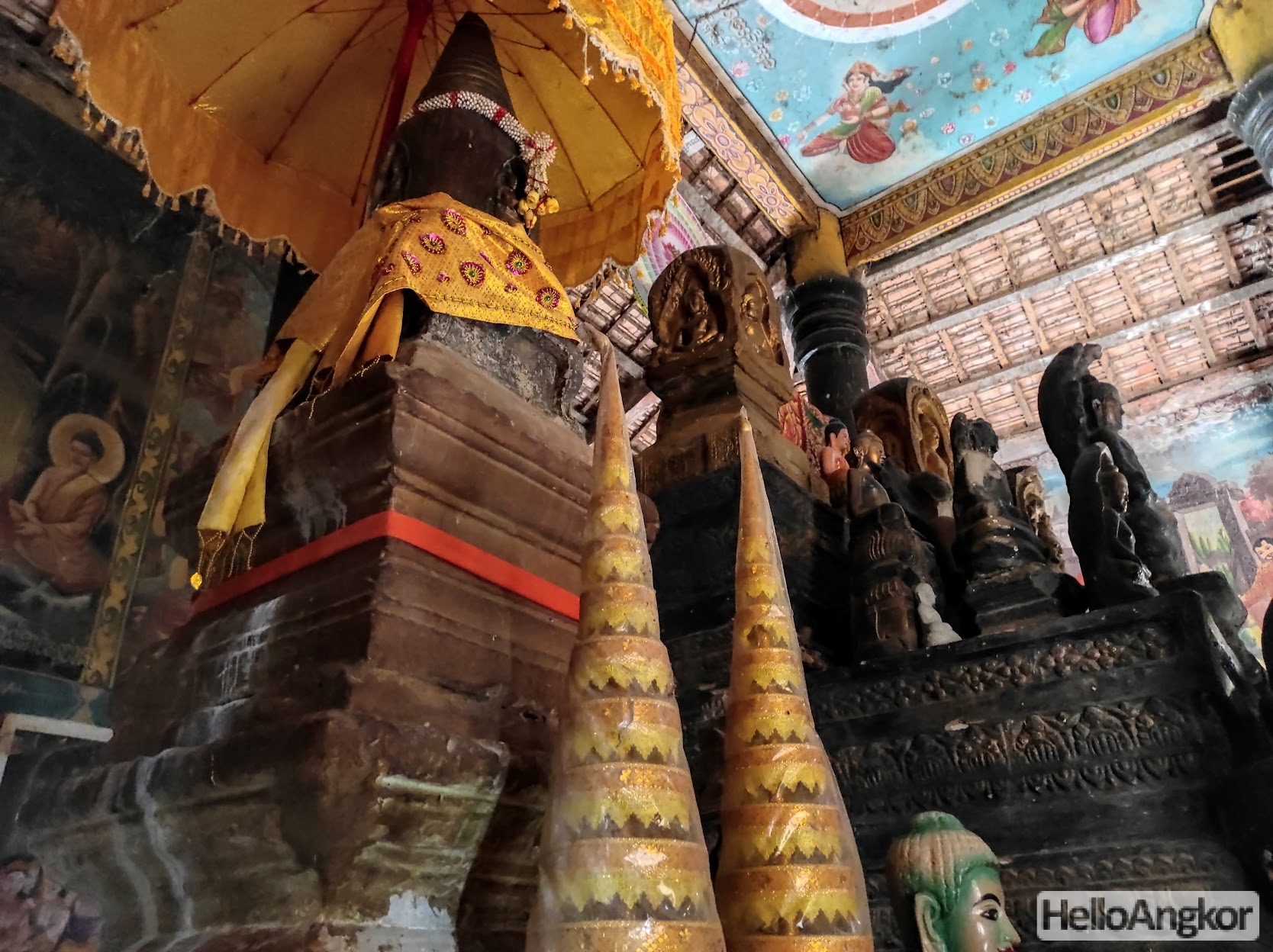

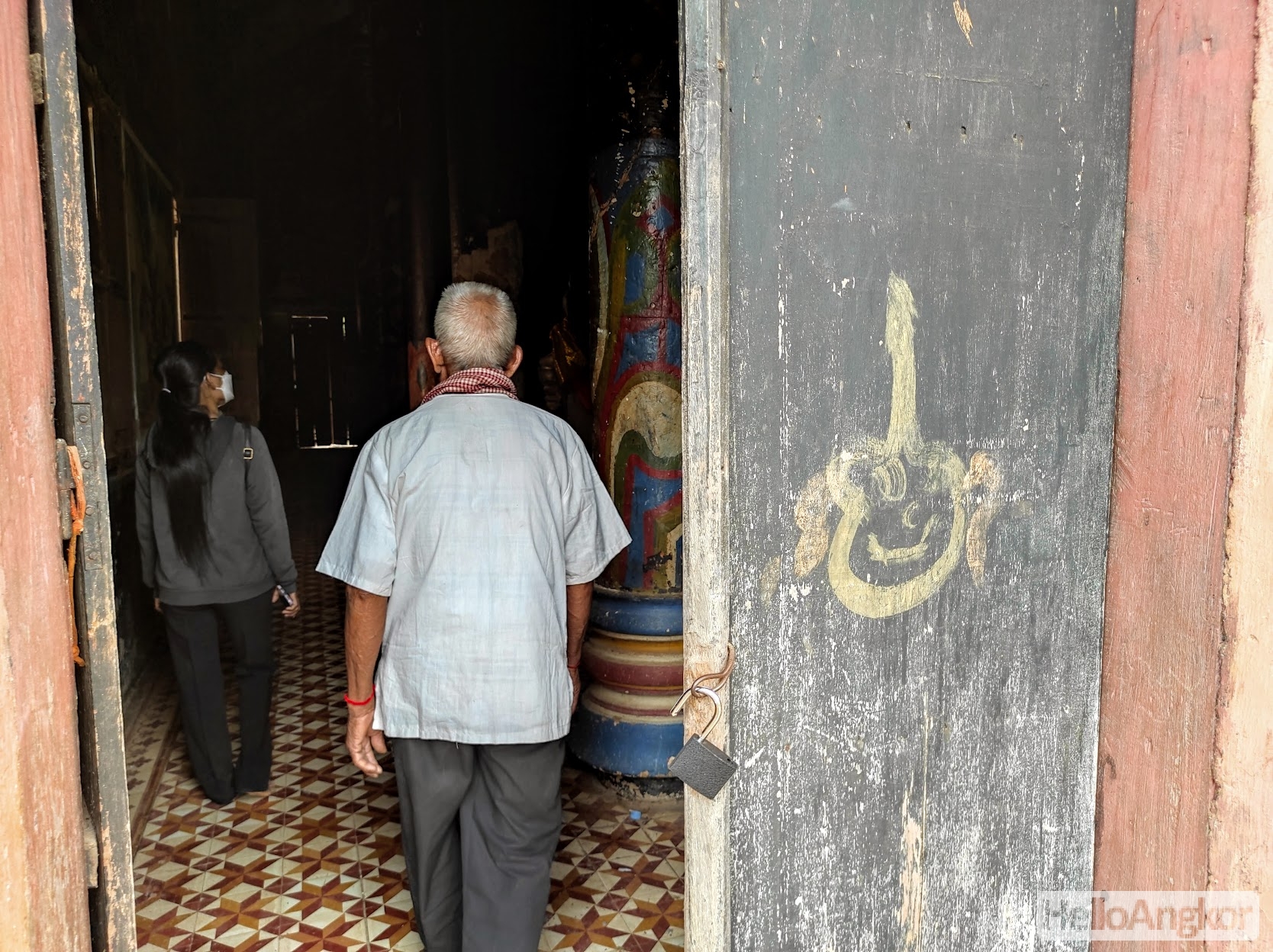

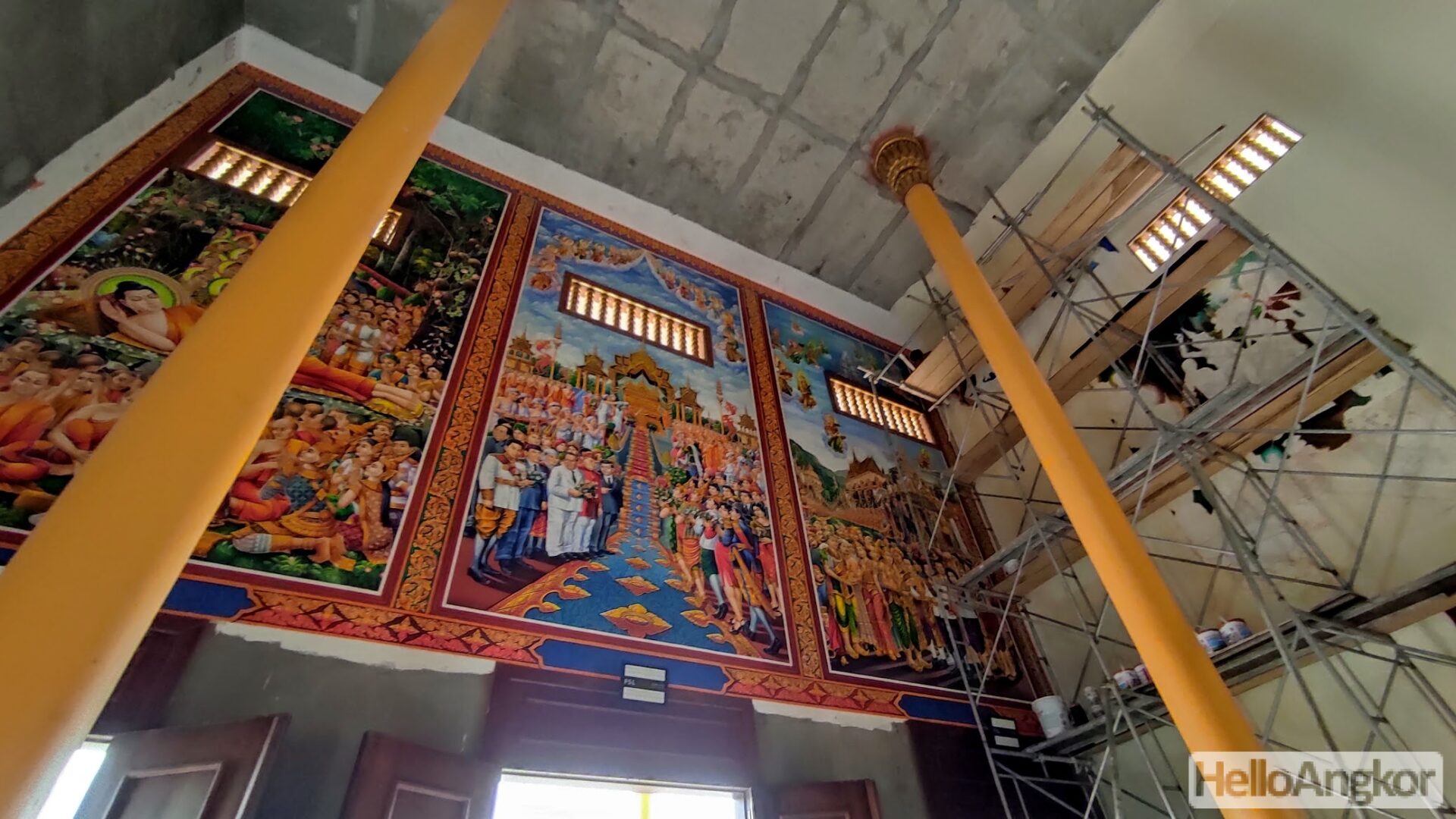
Later in the day, going to Wat Bon Bon Dei where an ancient pedestal sits beside the pagoda, and afterward, the fascinating Wat Sampow Trailok Traileak. This pagoda is grand in its scale and concept replicating a series of boats and positioned right beside the beautiful Stung Sen River. A ferry is the only way across until the bridge is completed someday.

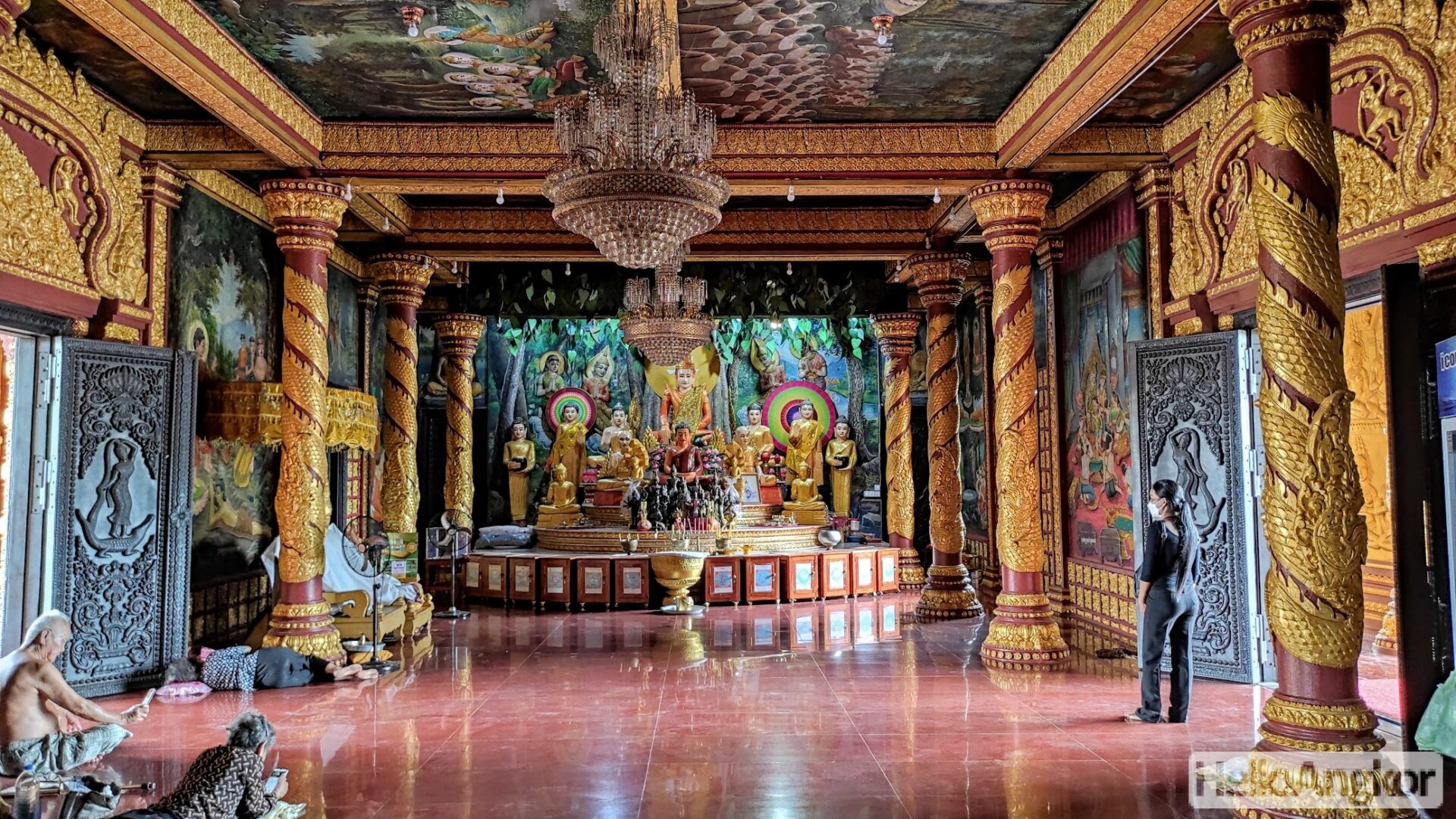


The last stop before heading out the next day was the Kampong Thom Provincial Museum which houses a very cool collection of artifacts including lintels, bollards, boundary stones, steles, statuary, and much more. Much of very special, don’t miss the chance to check it out and leave a donation.

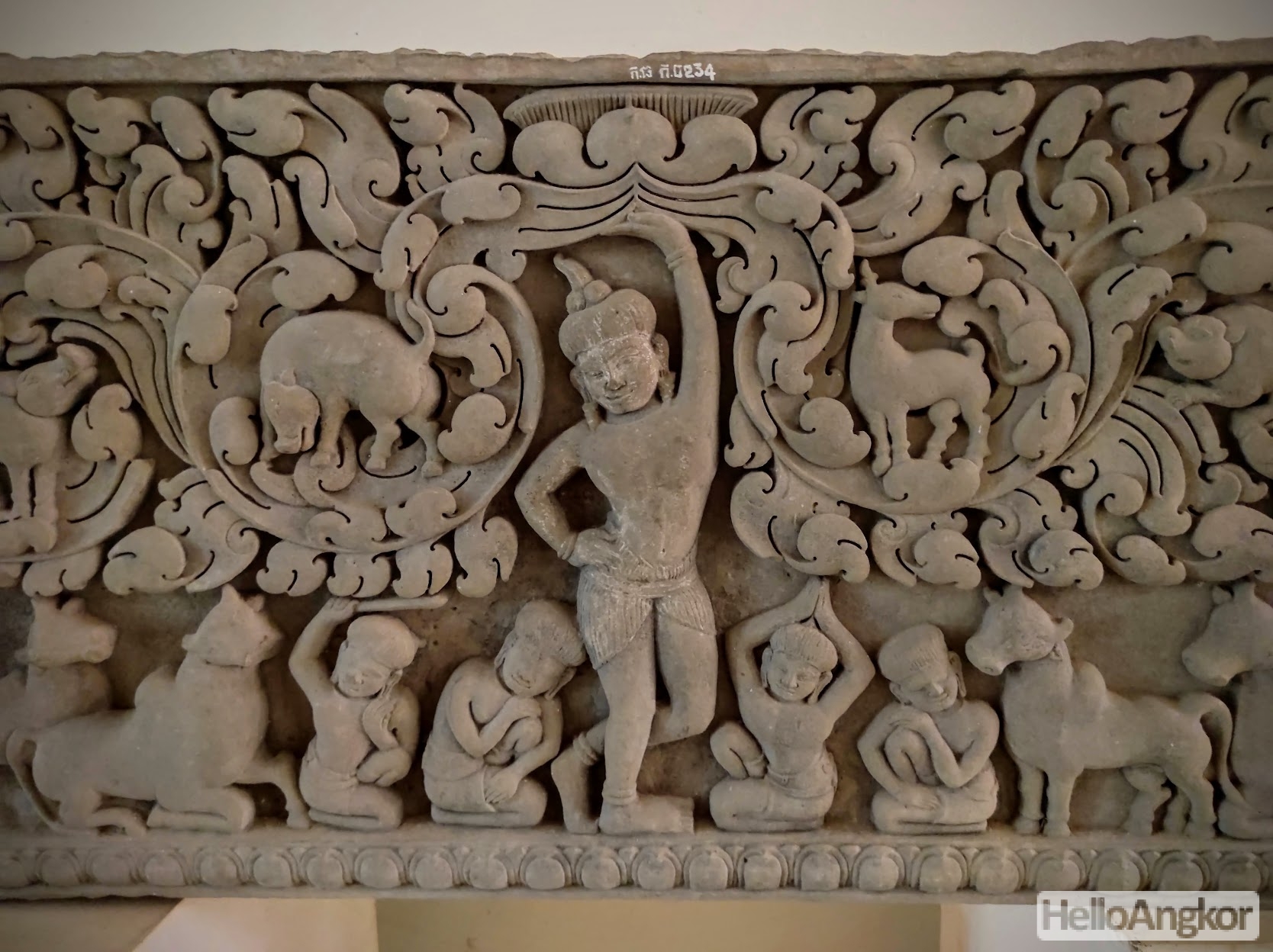

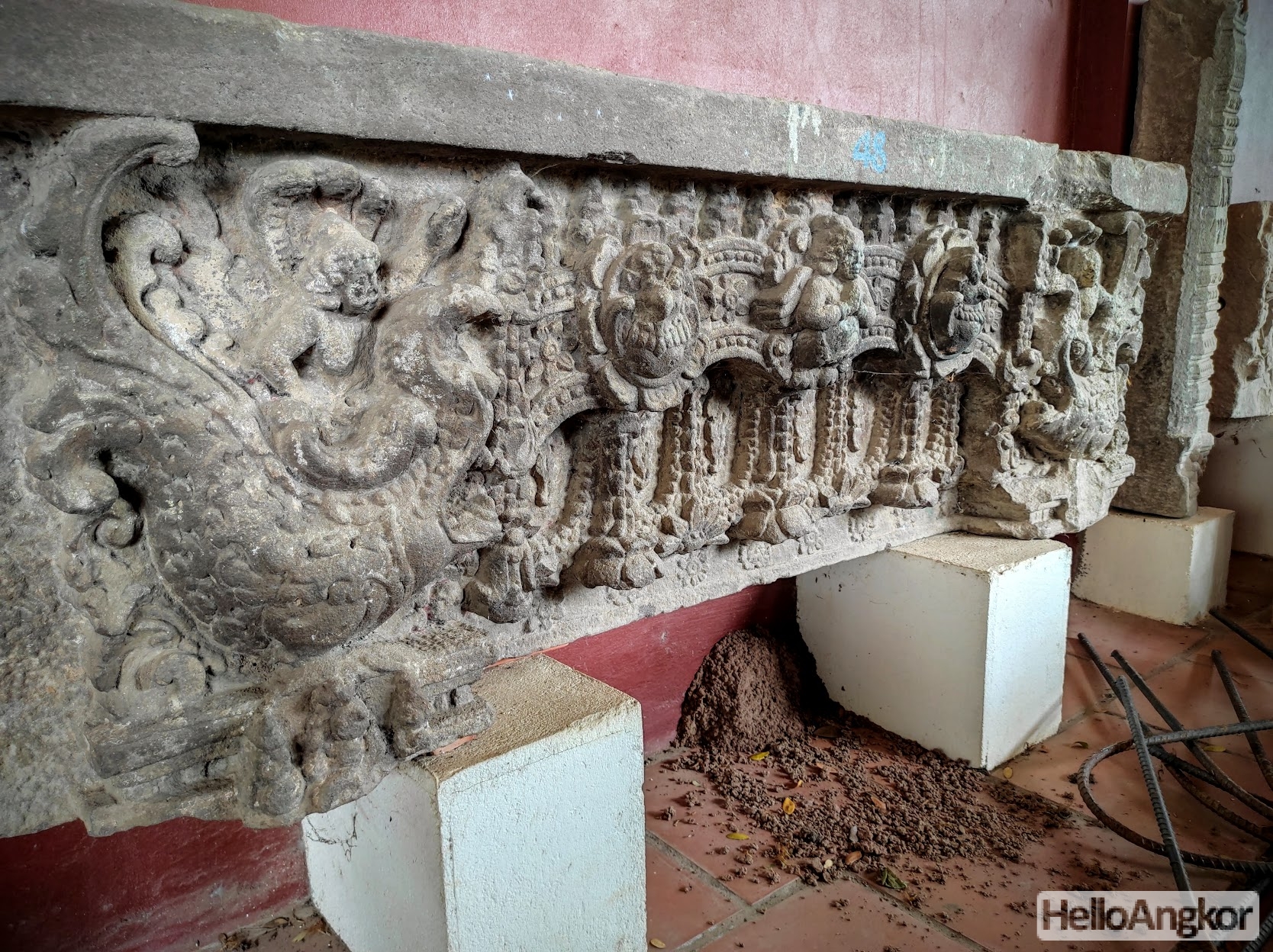
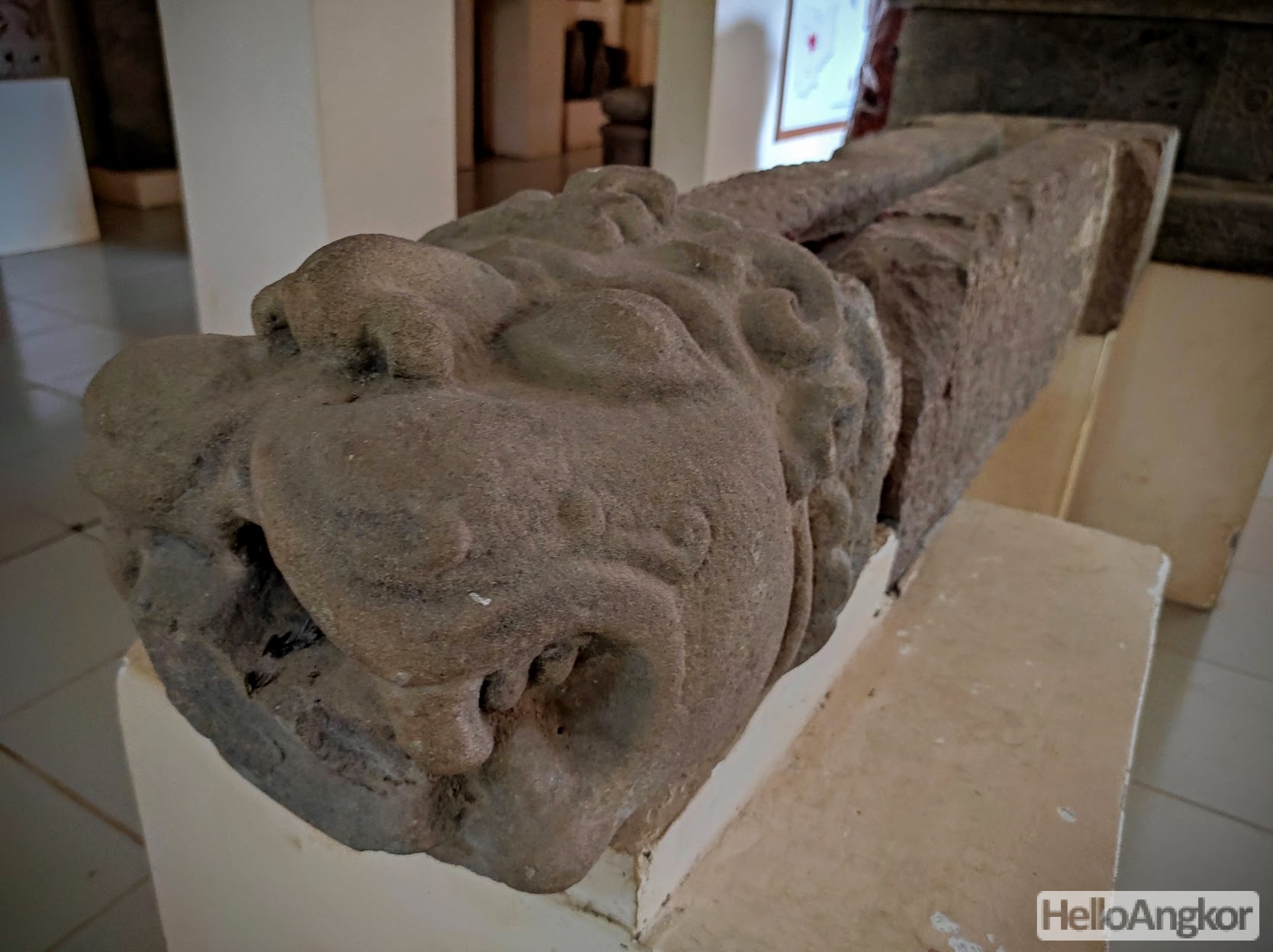
On the way back to Siem Reap, dodging a thunderstorm for most of the way at least, I stopped at a couple of pagodas and, although there is nothing to really see, a fascinating site, Prasat Sasar Sdam.
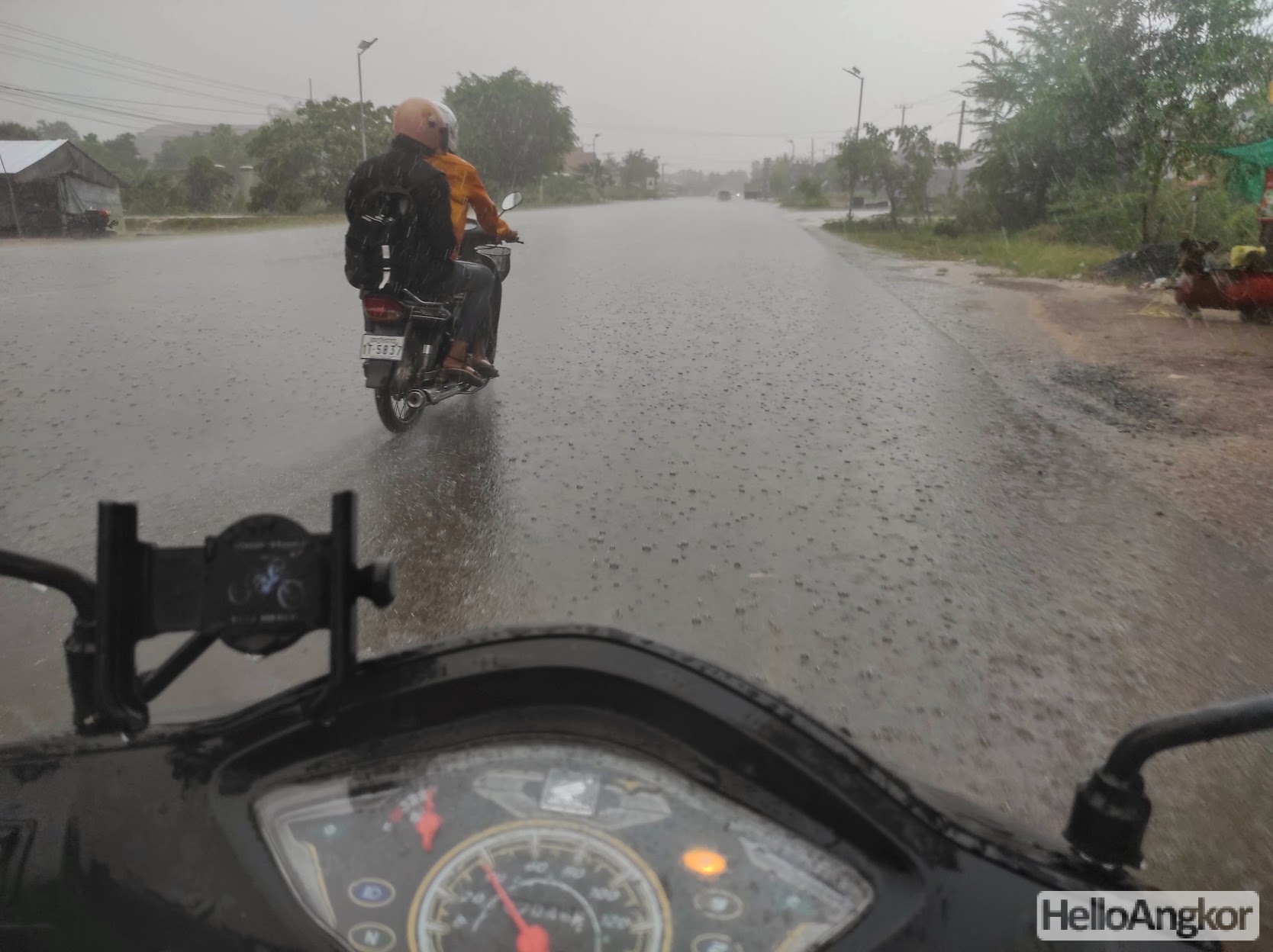


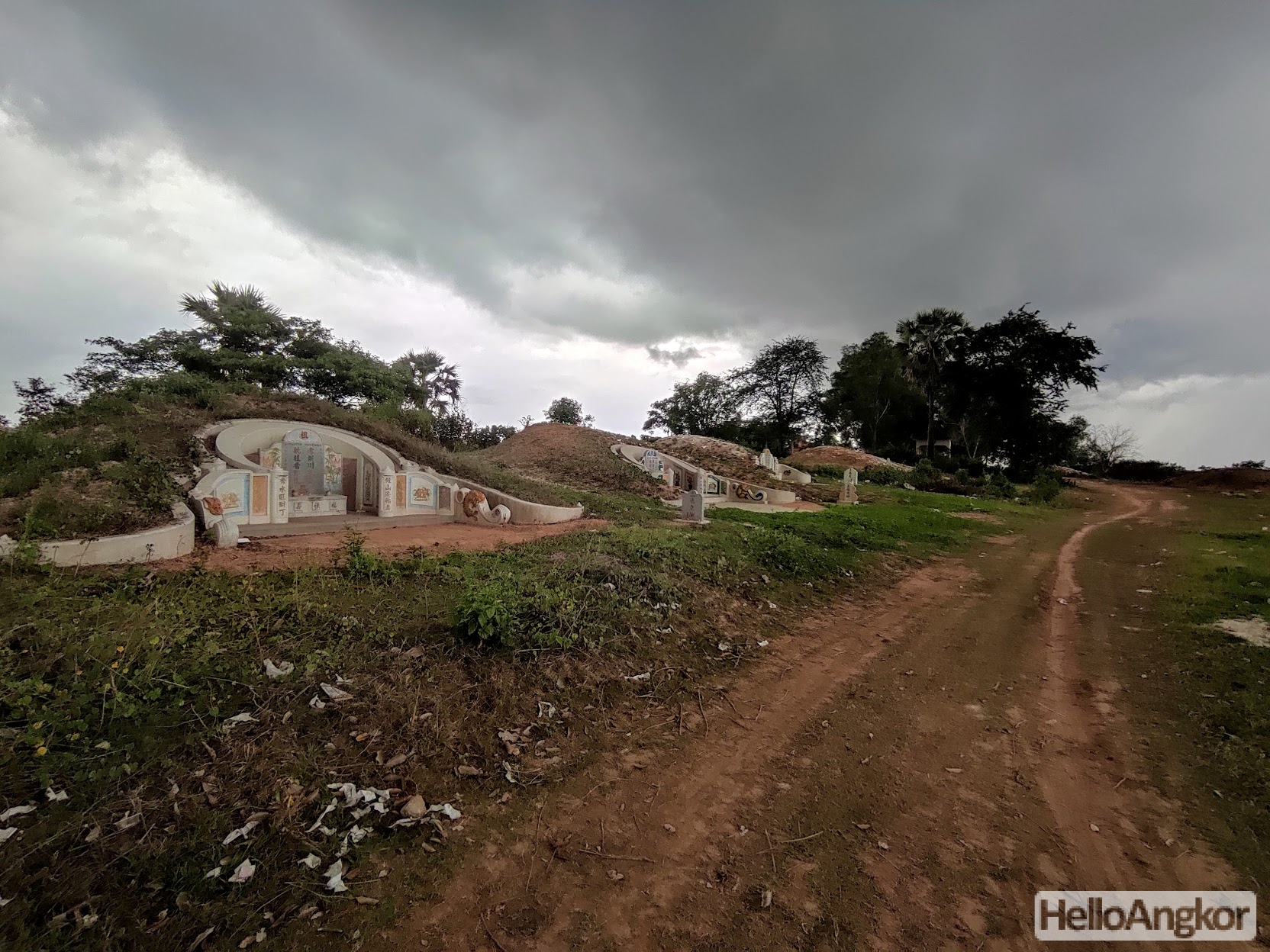

Map

